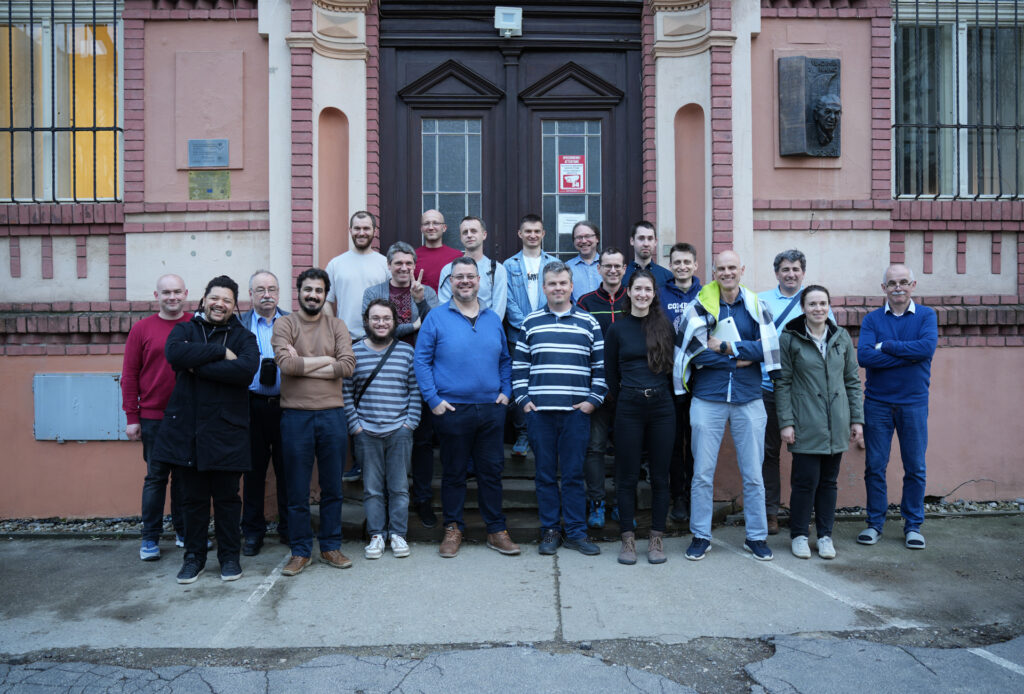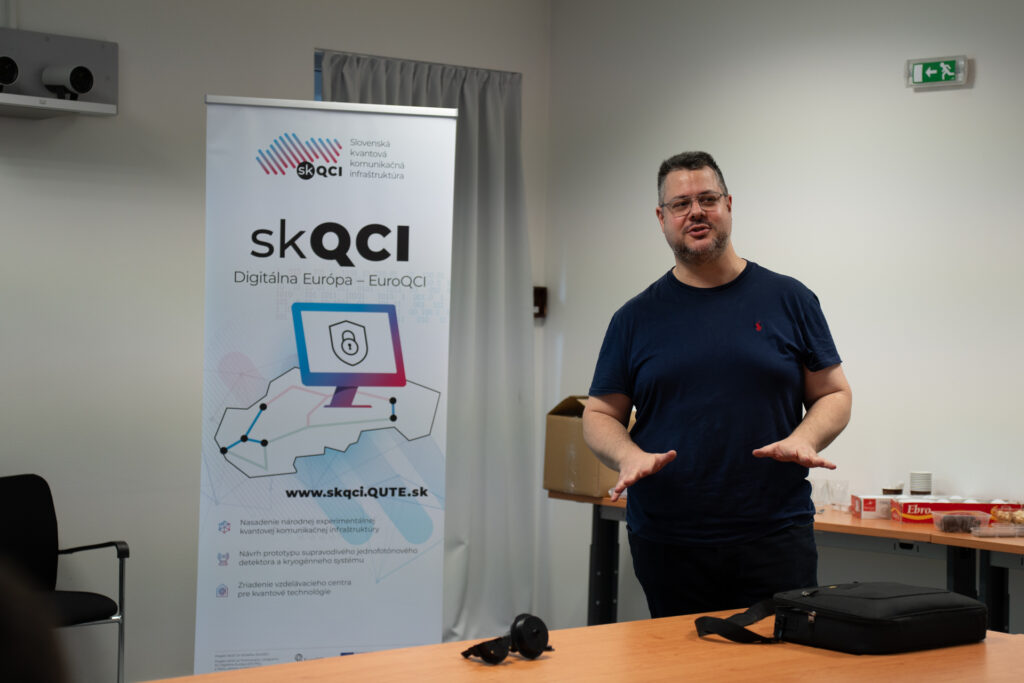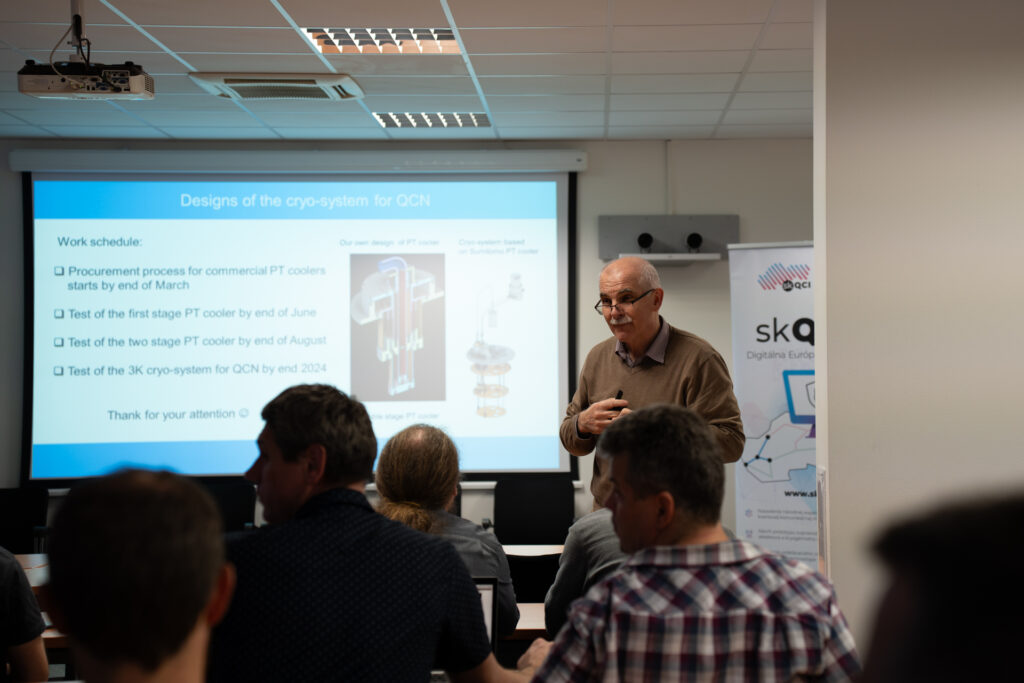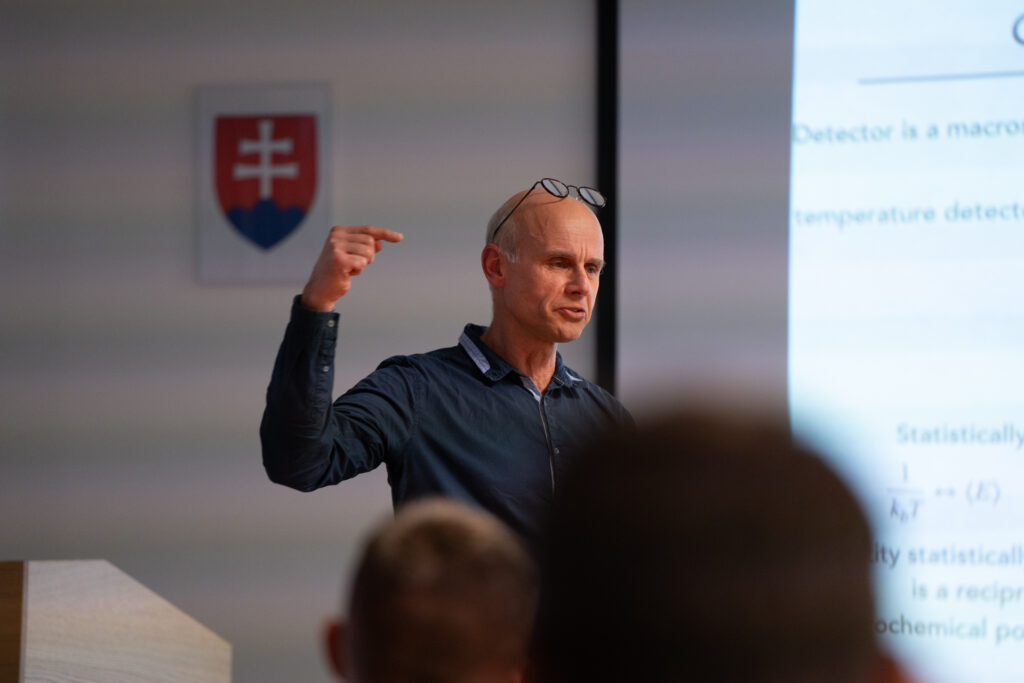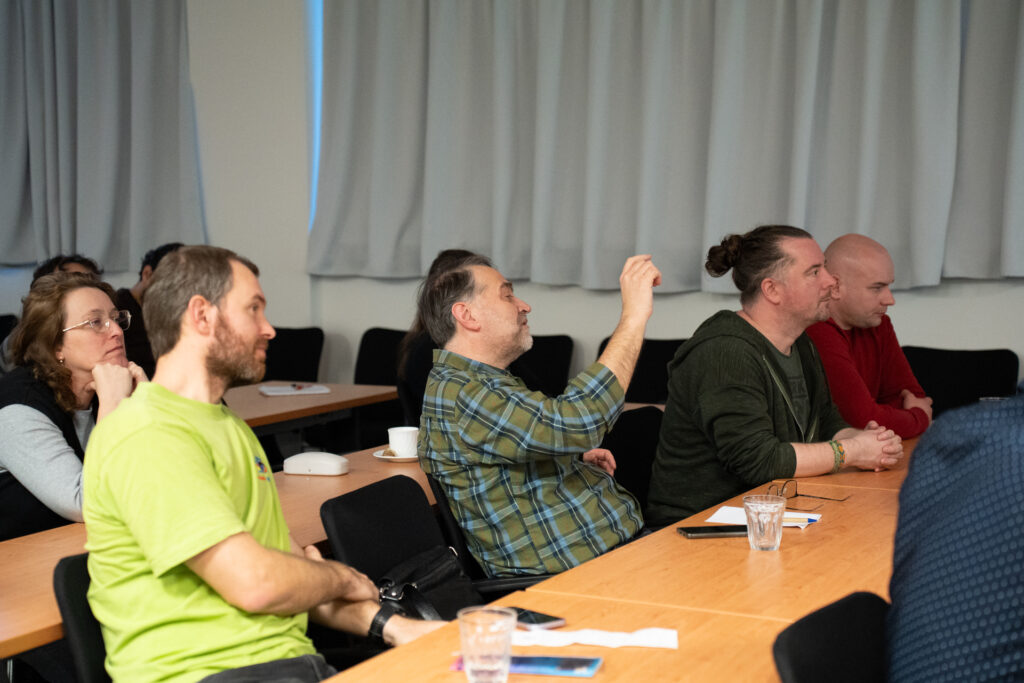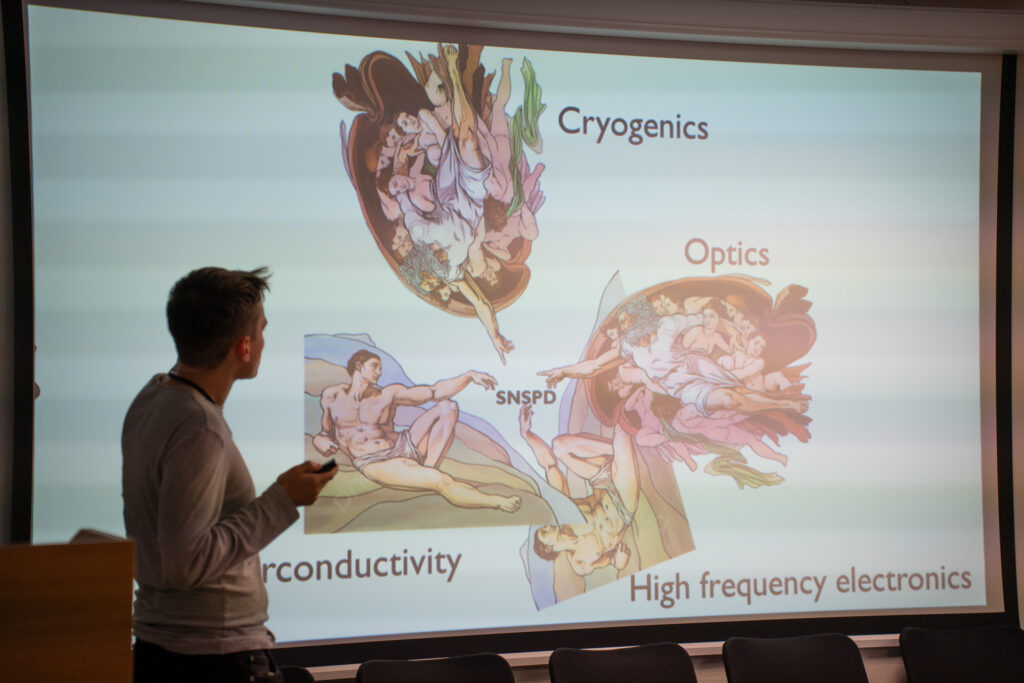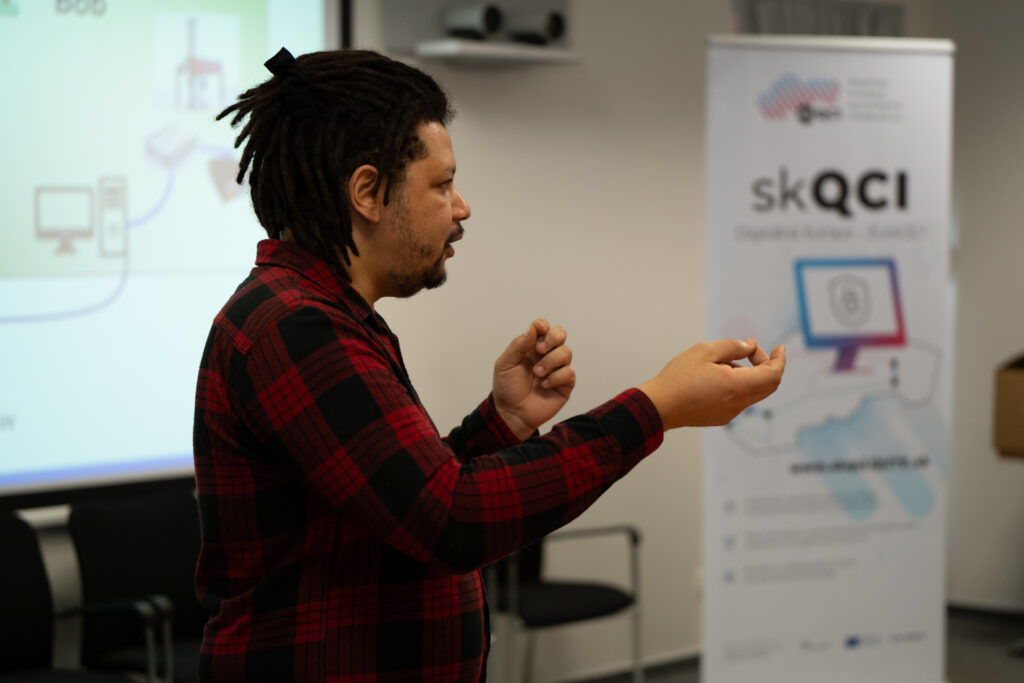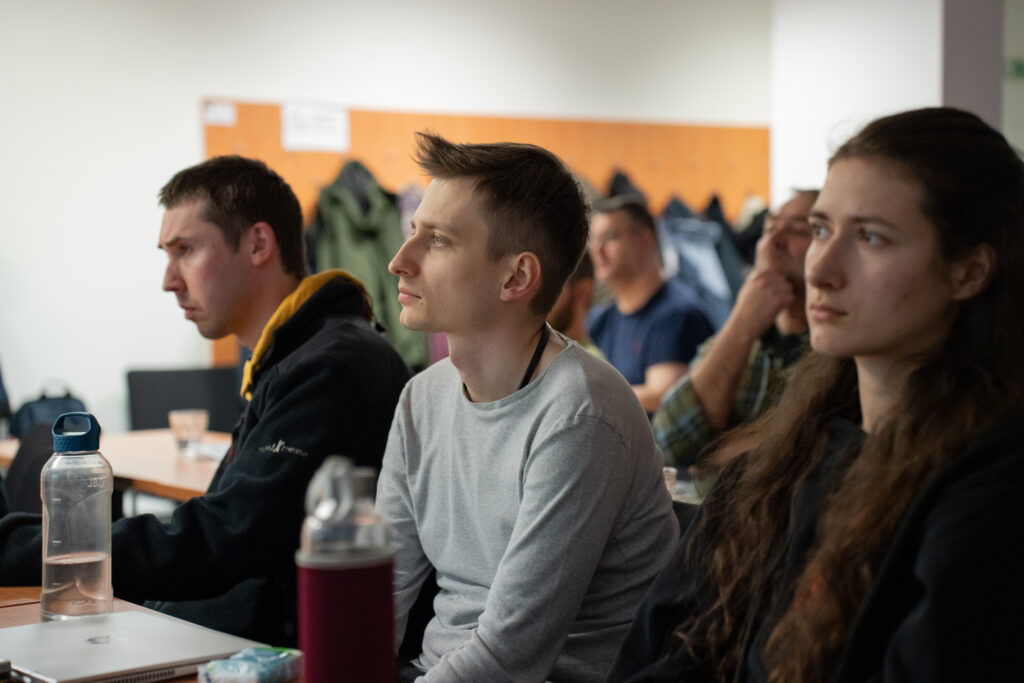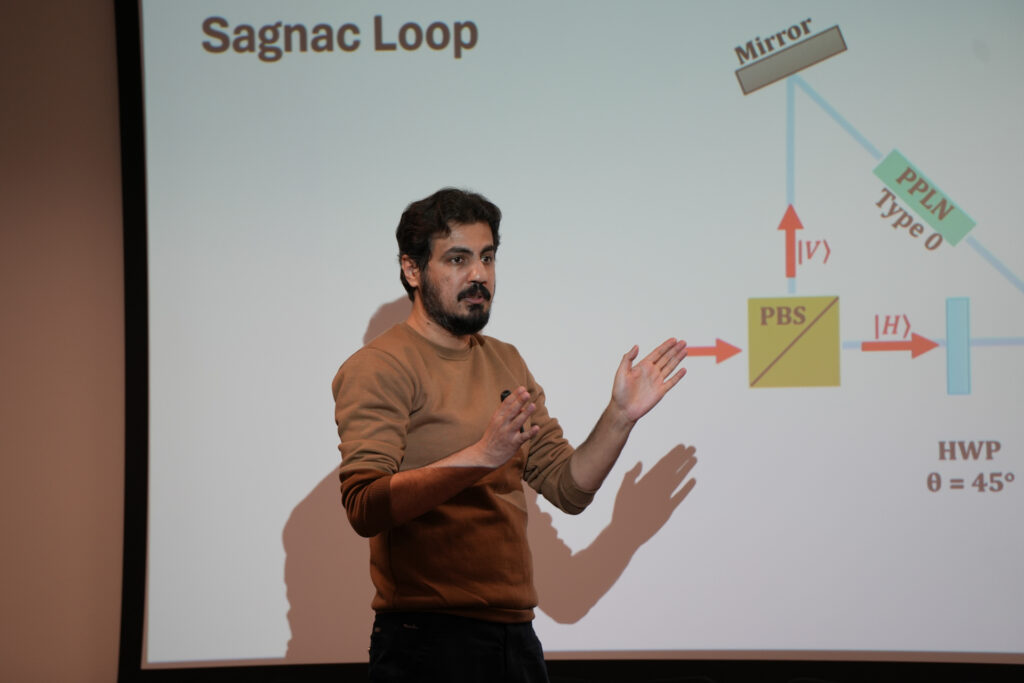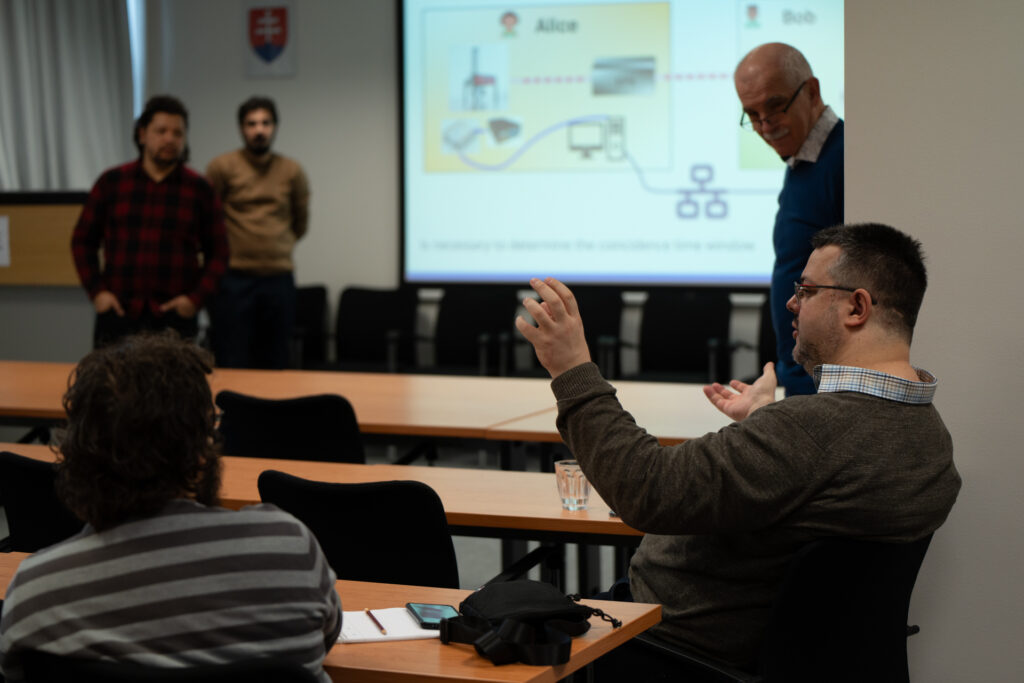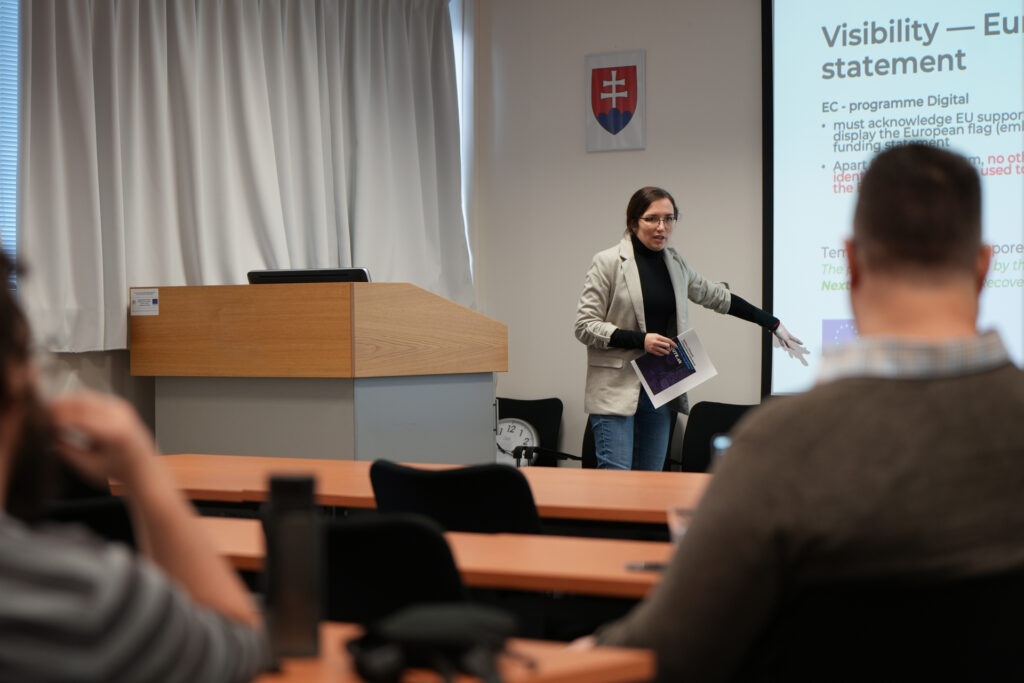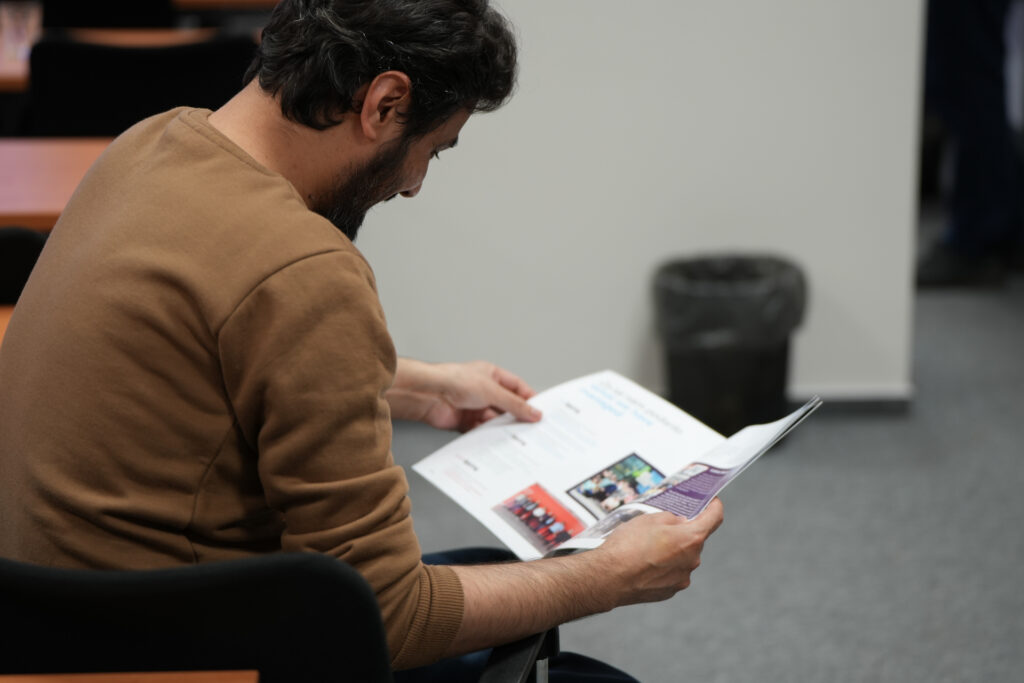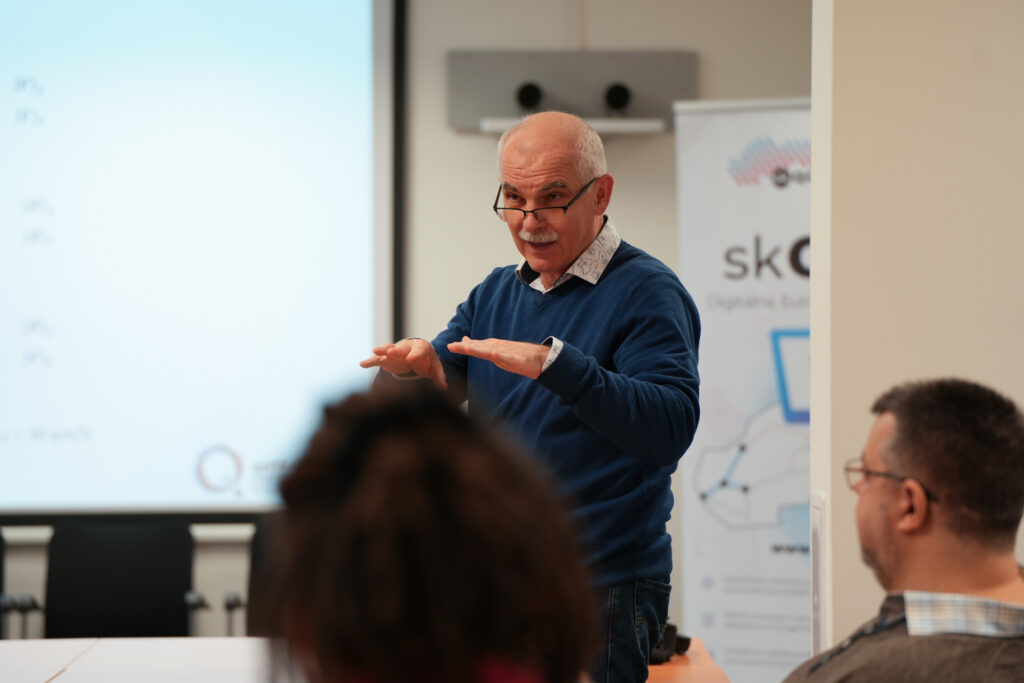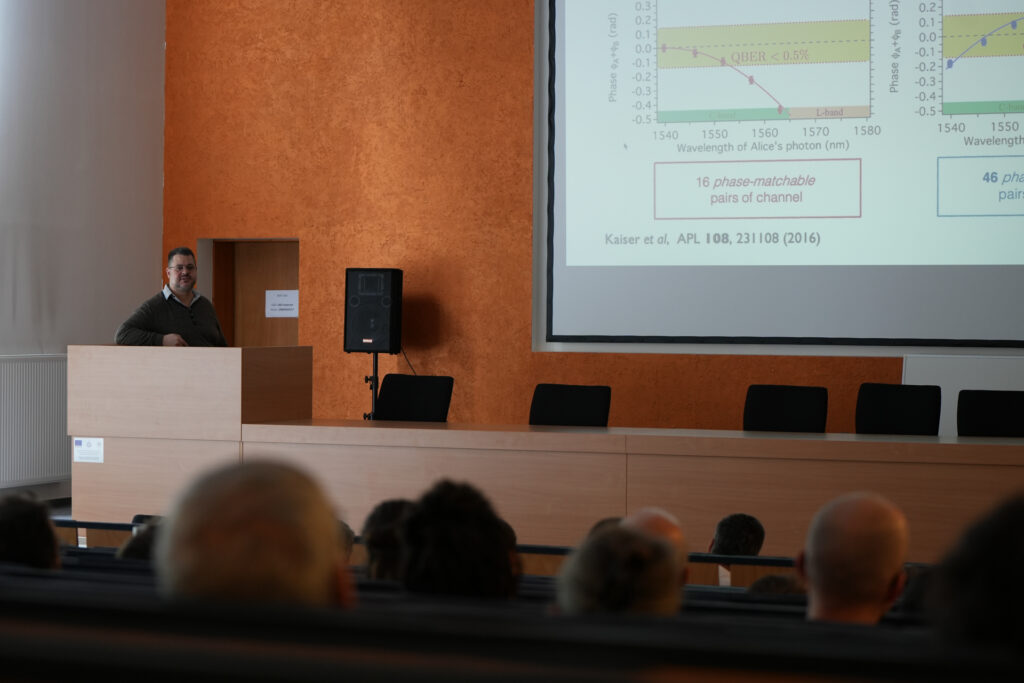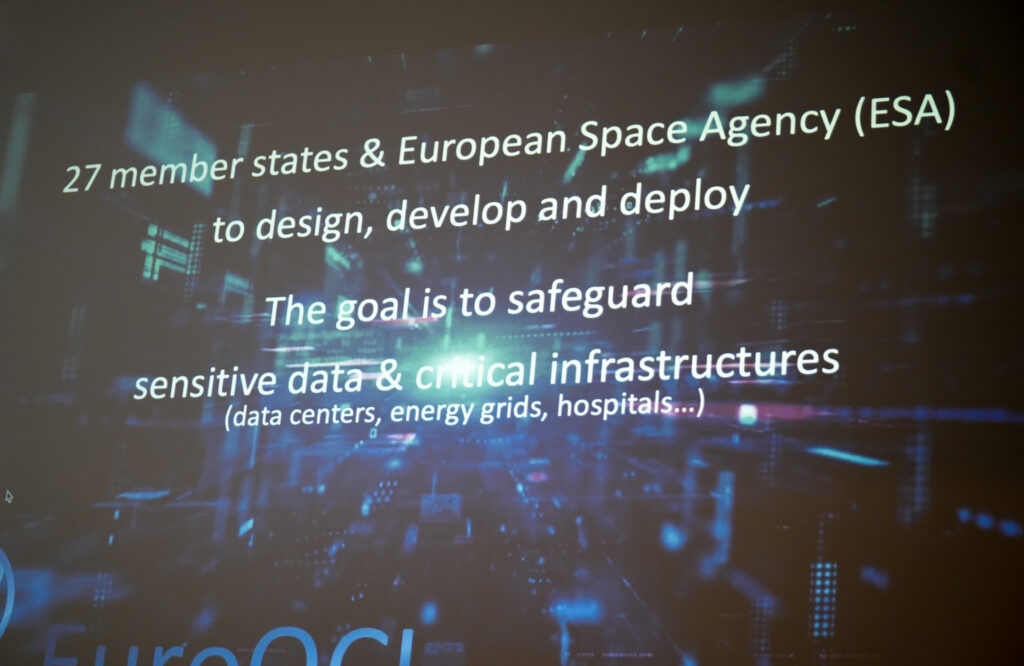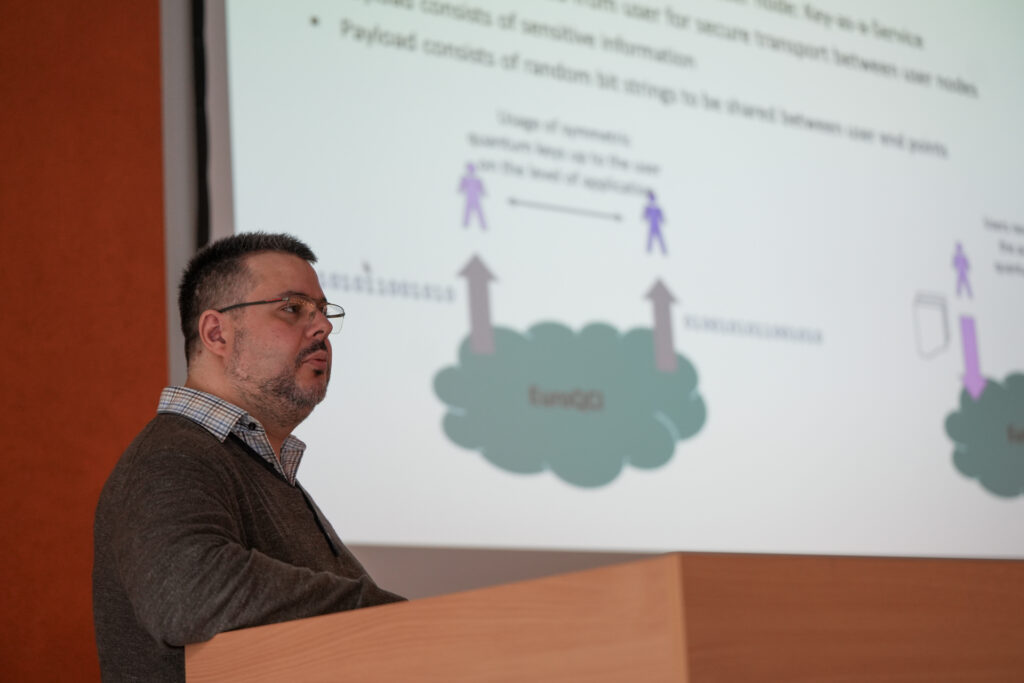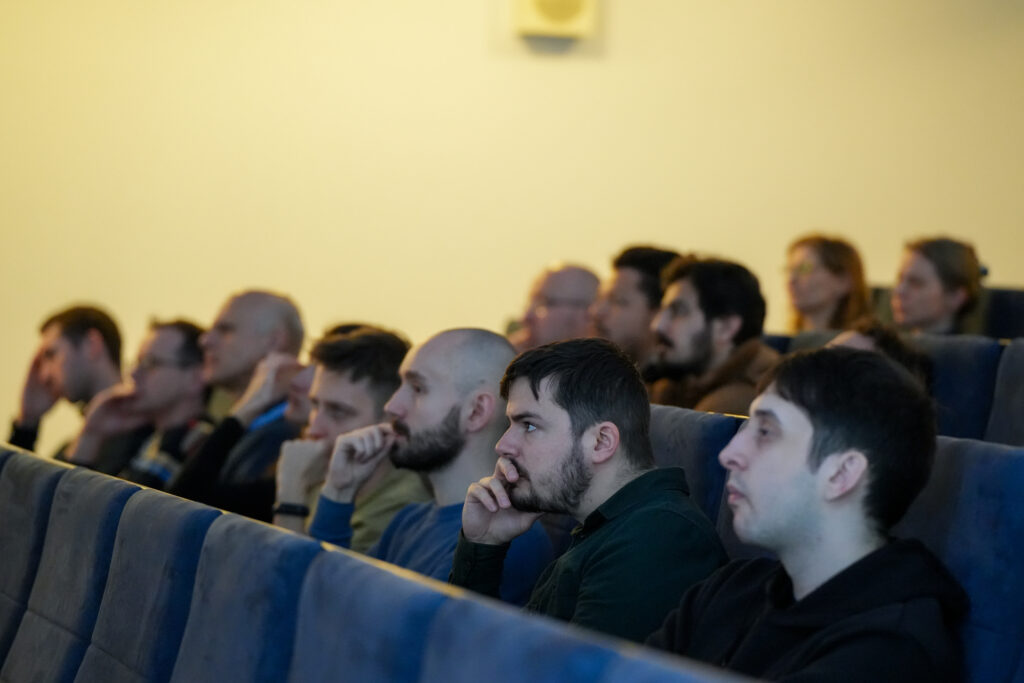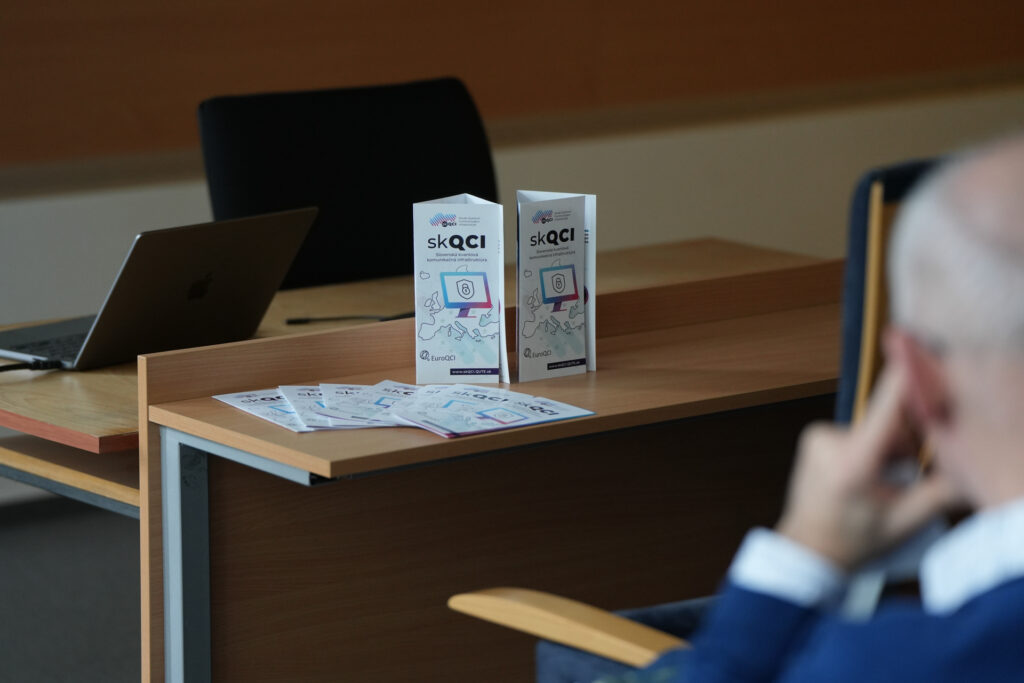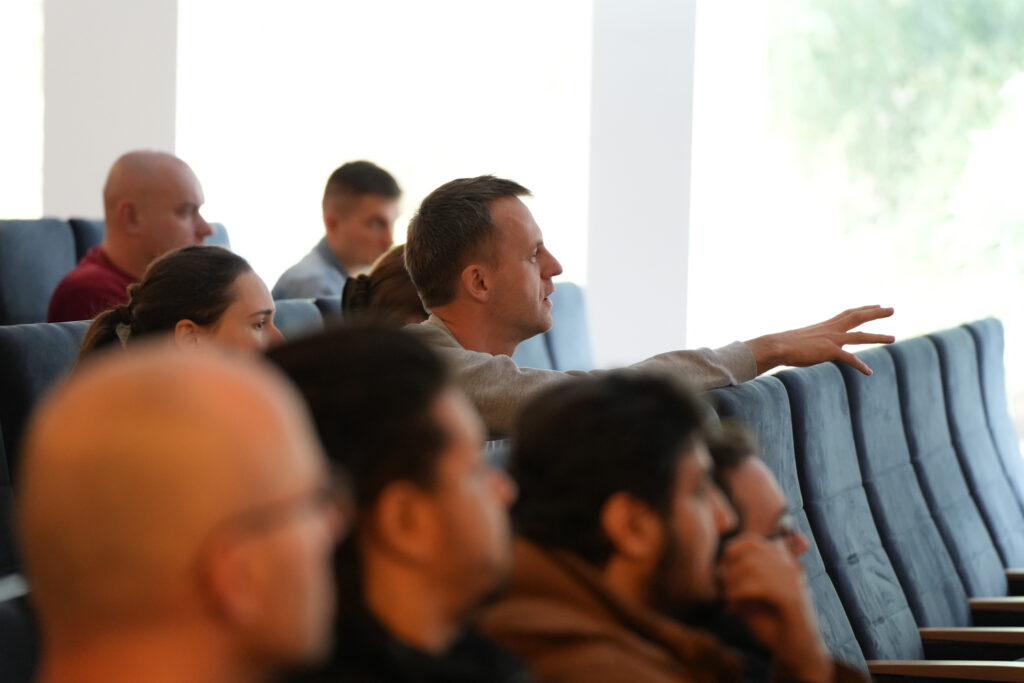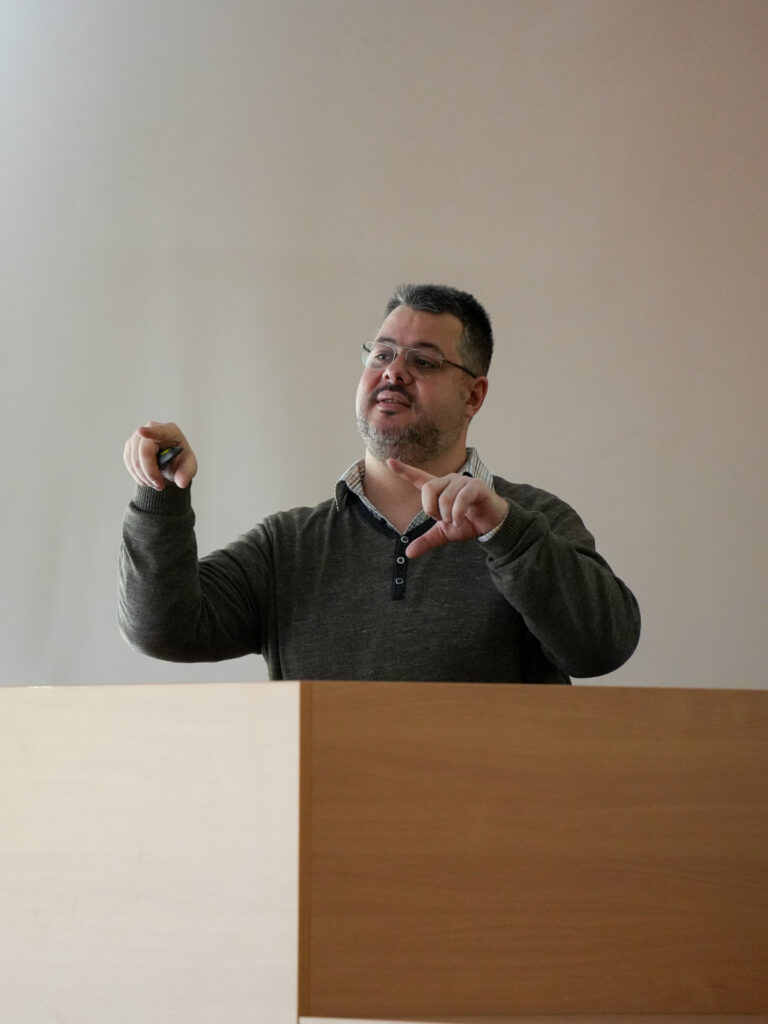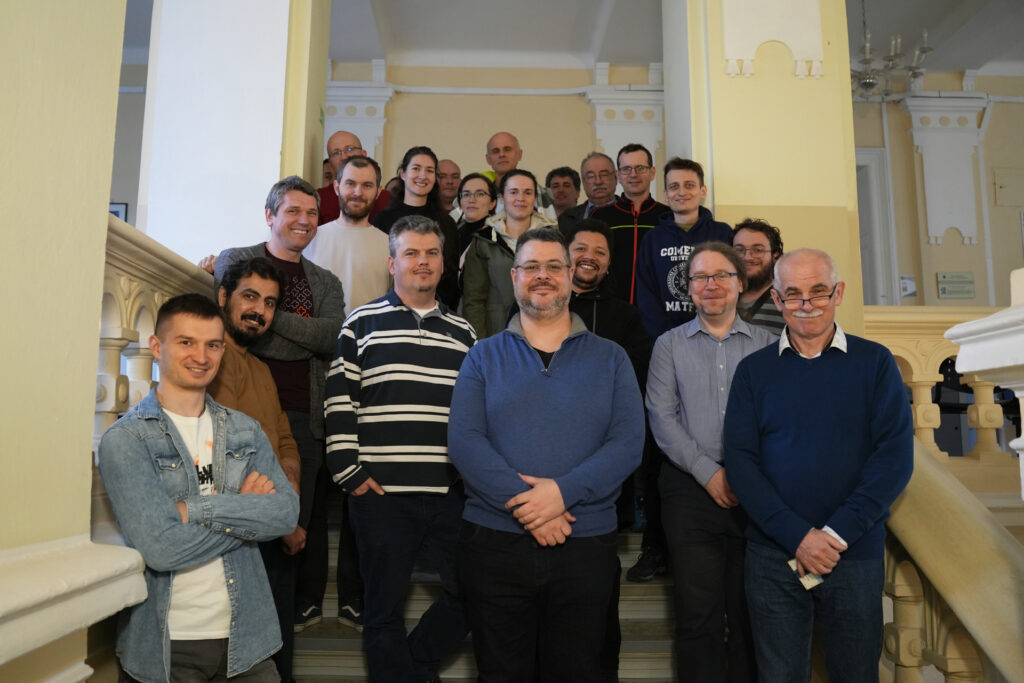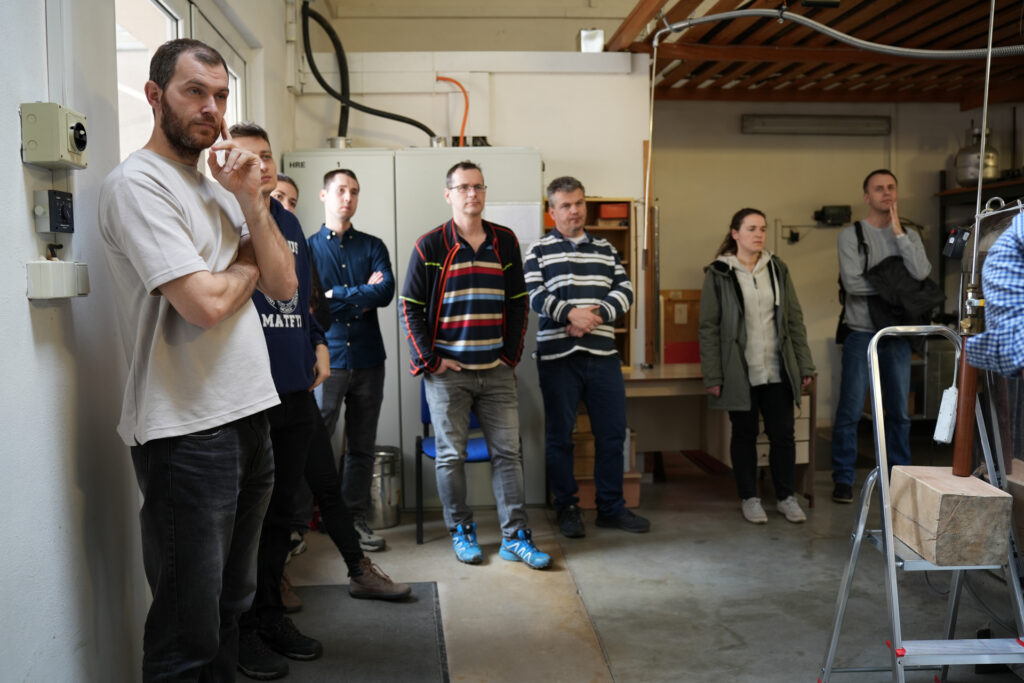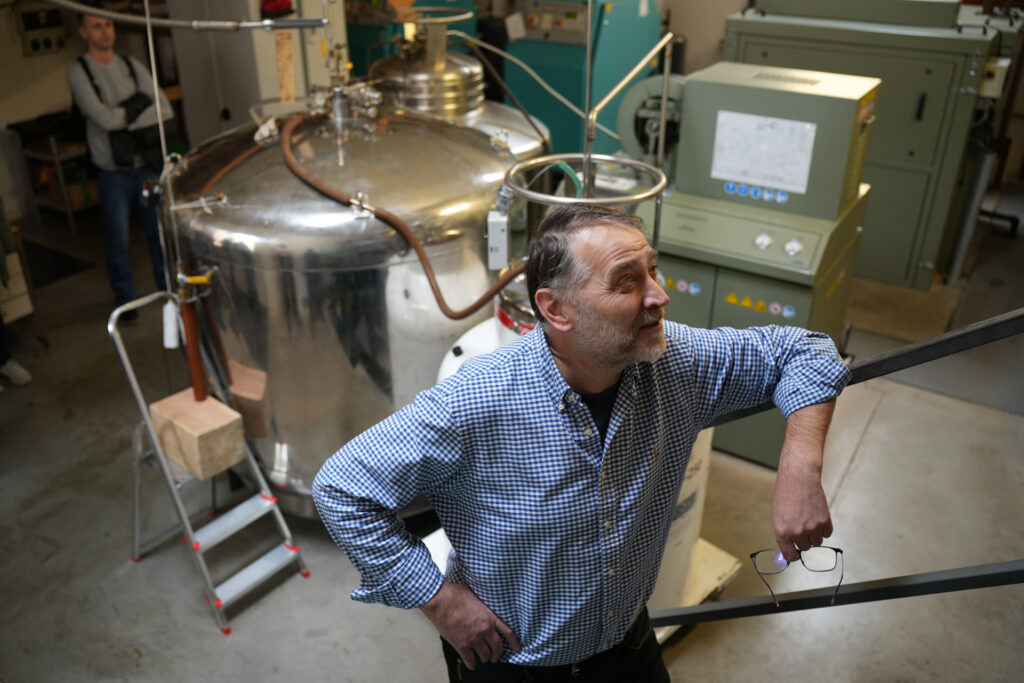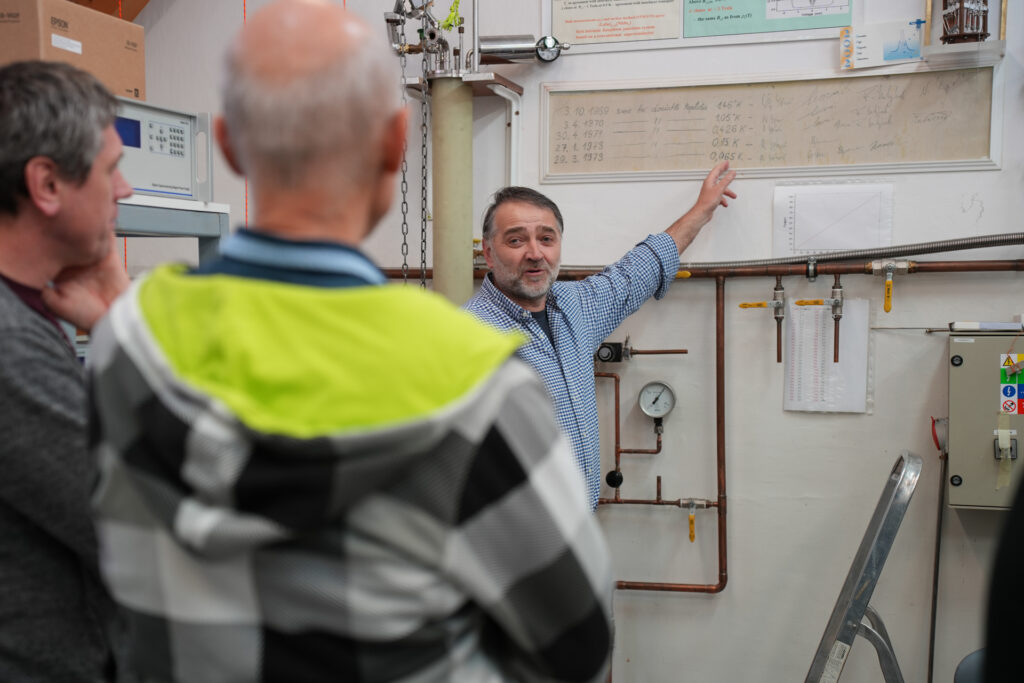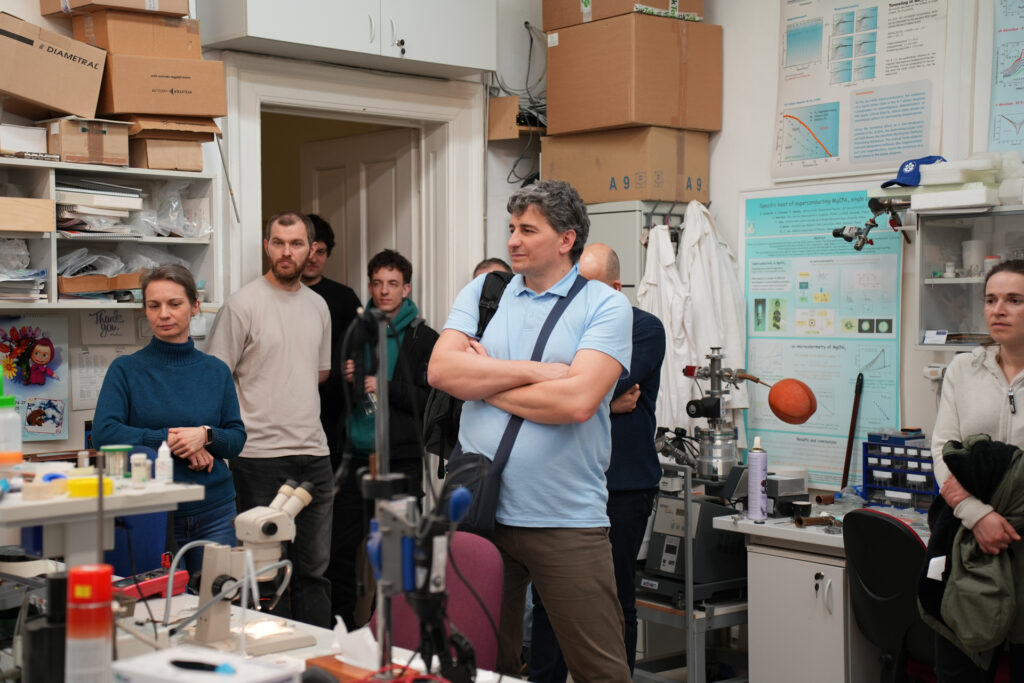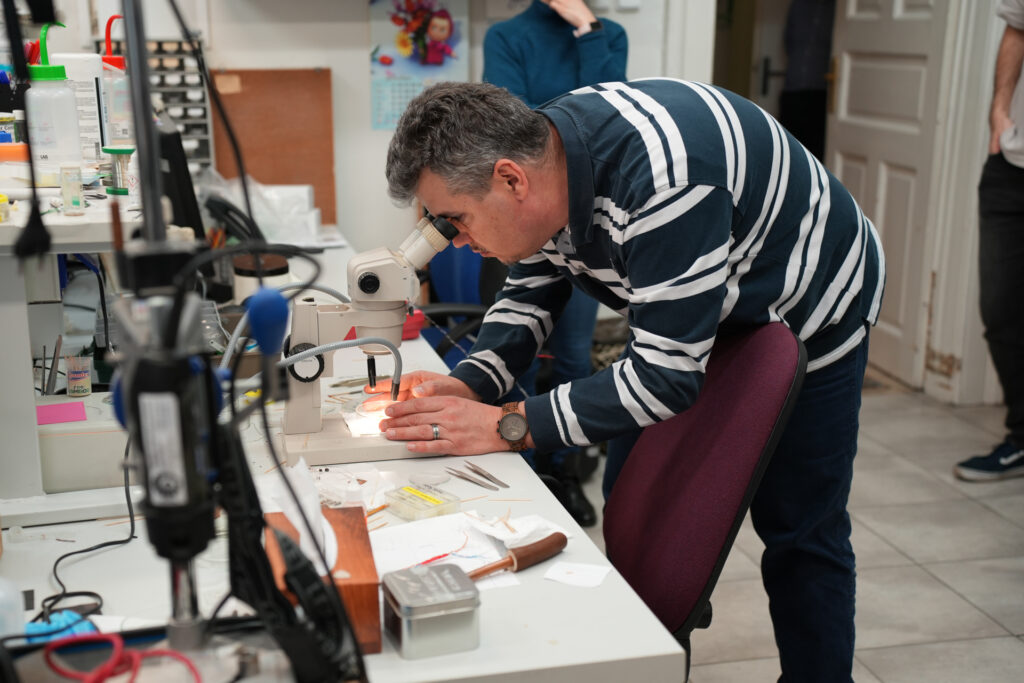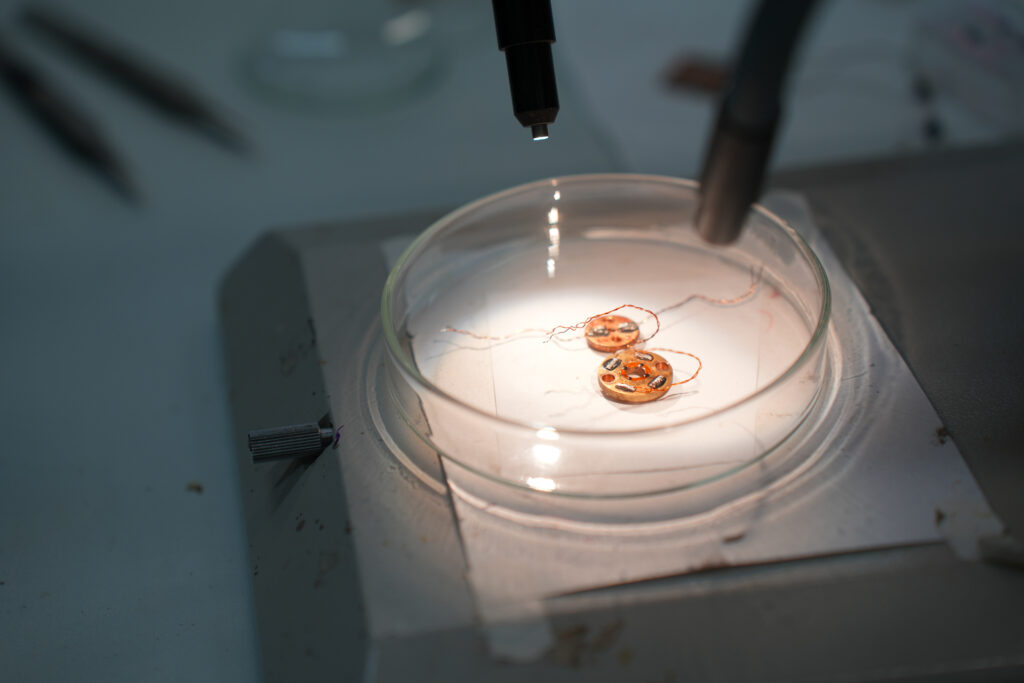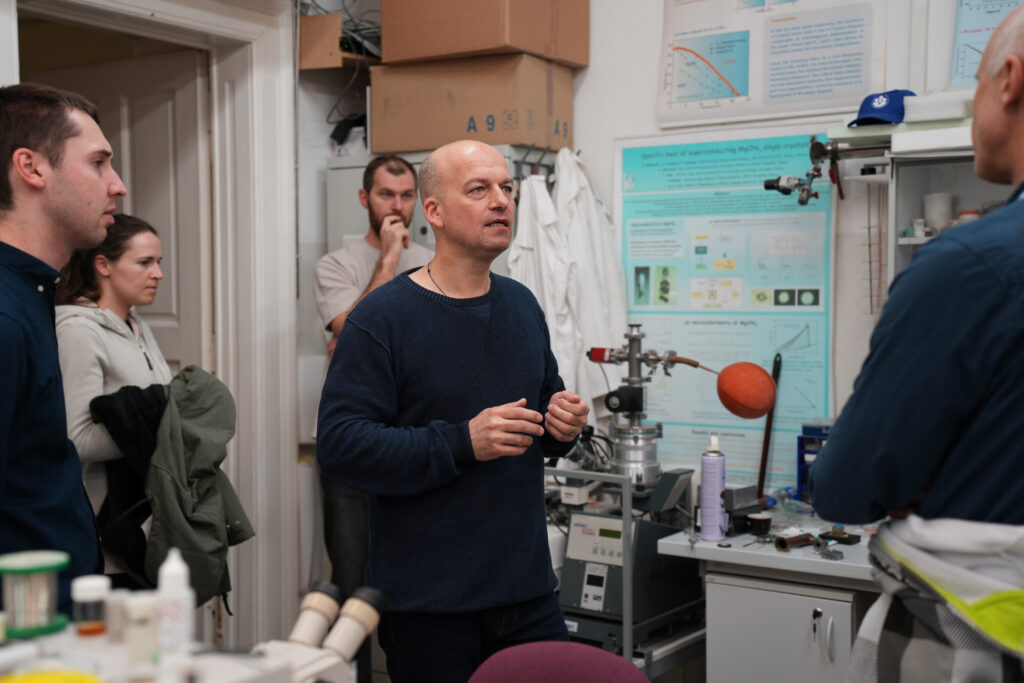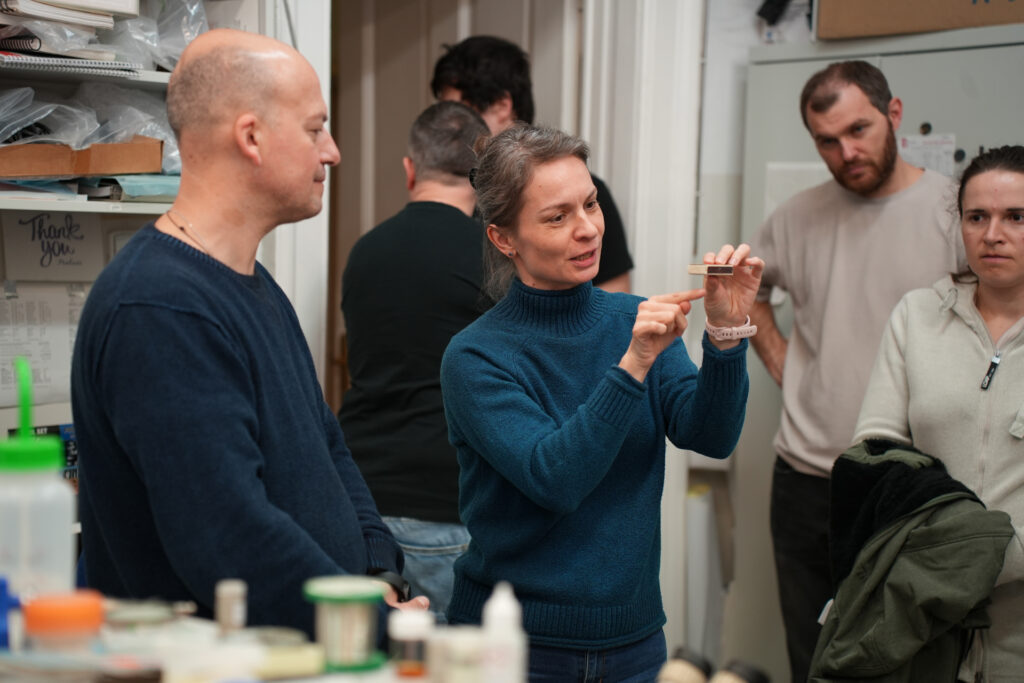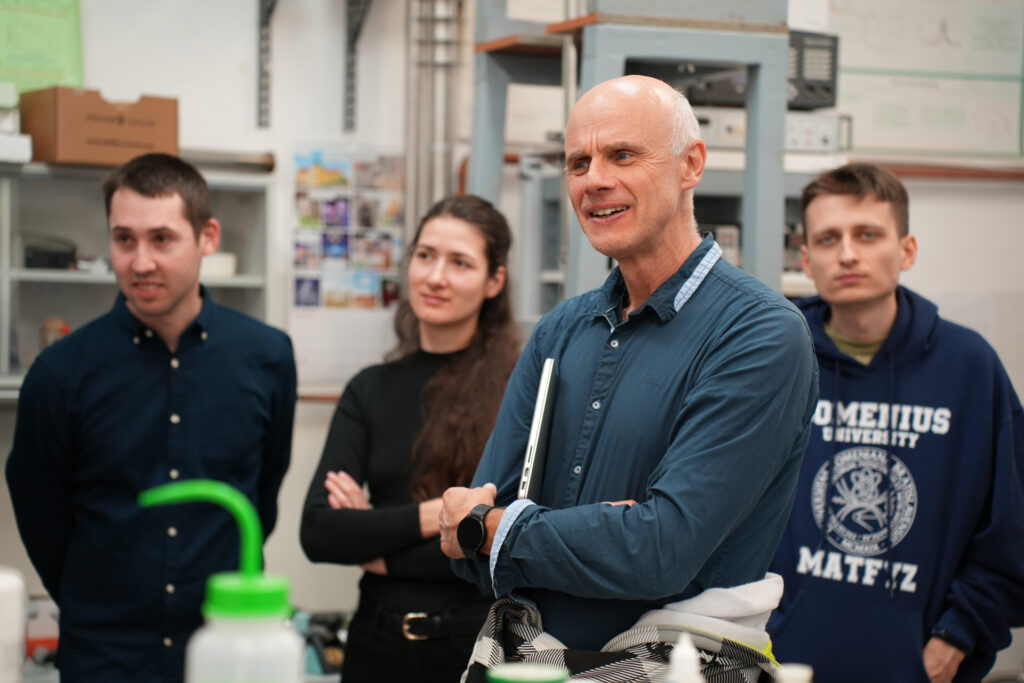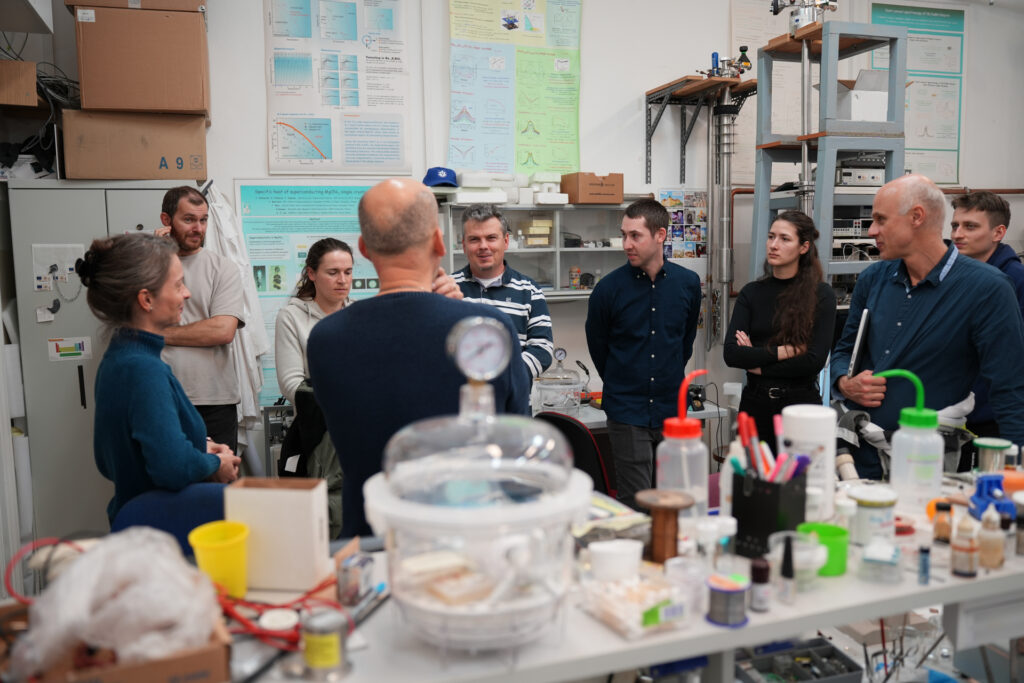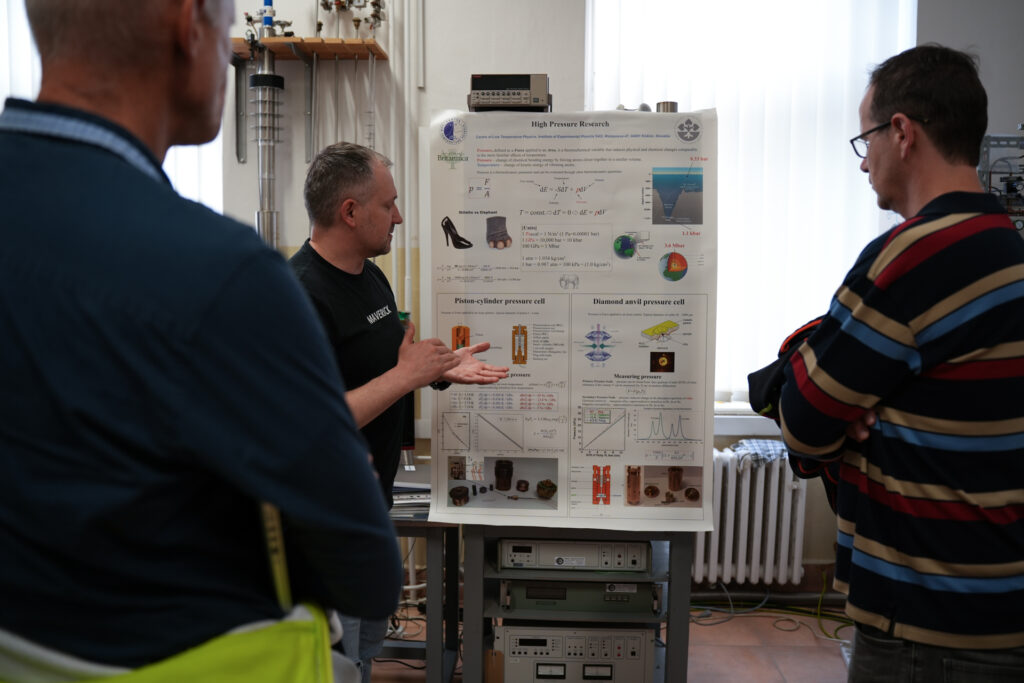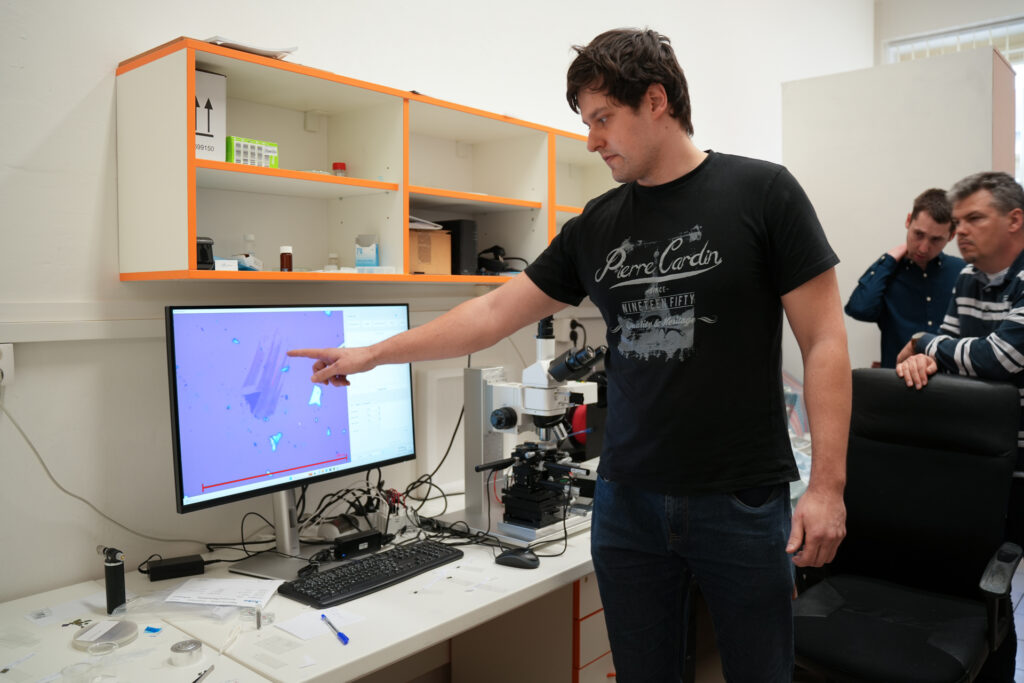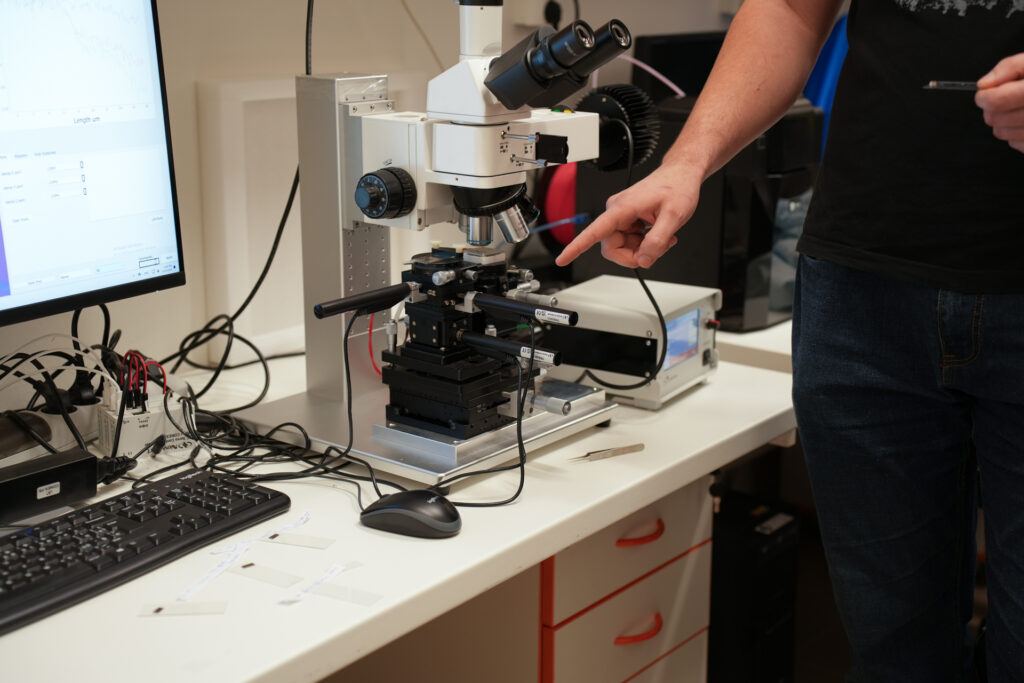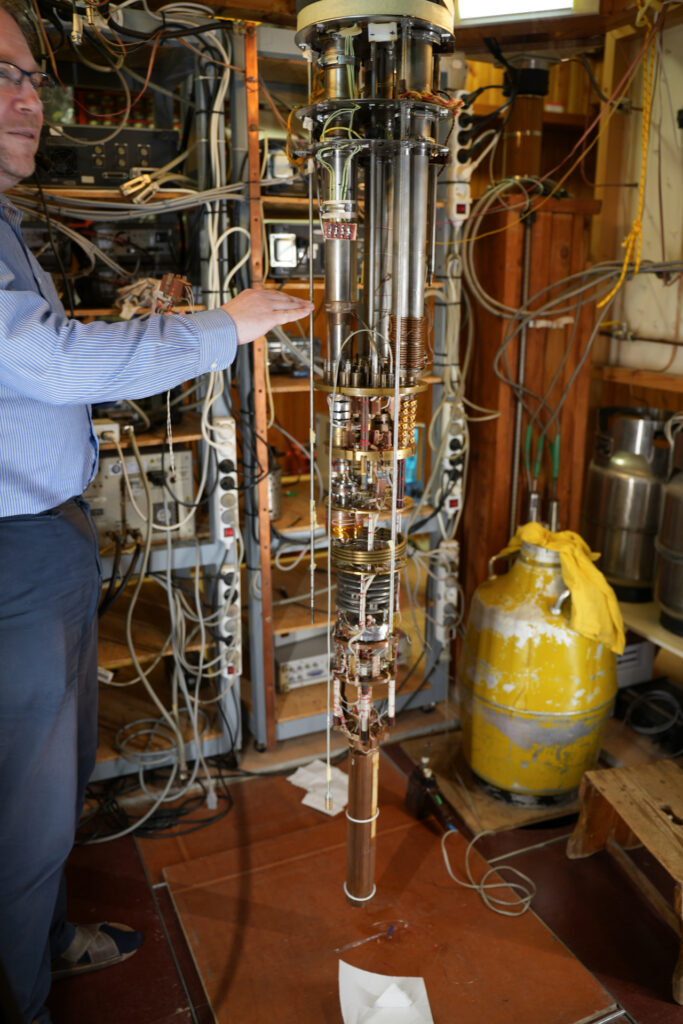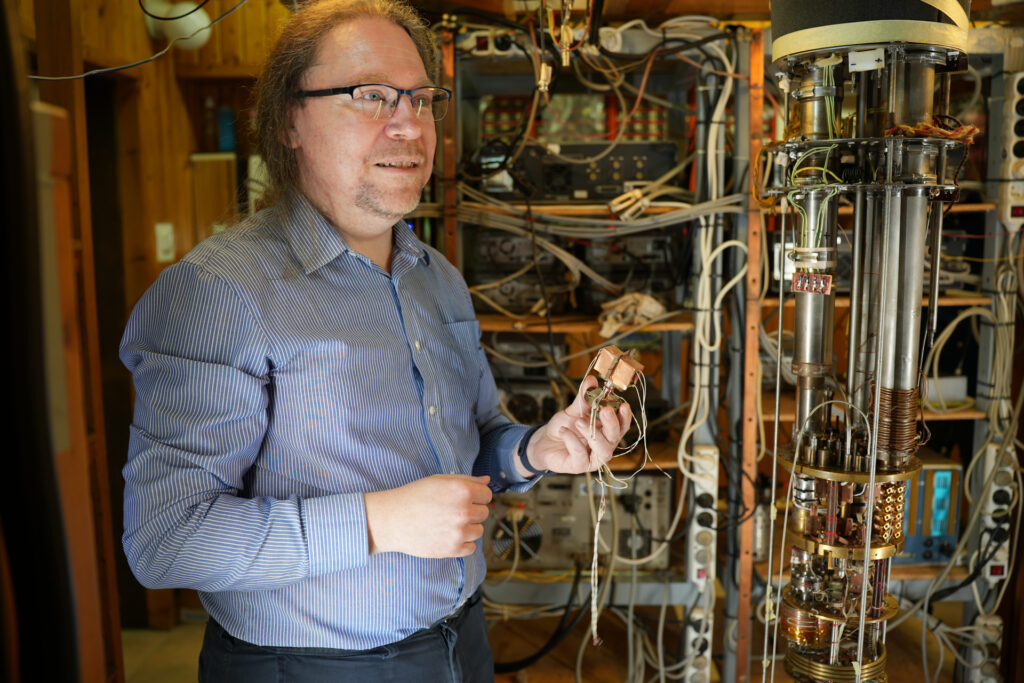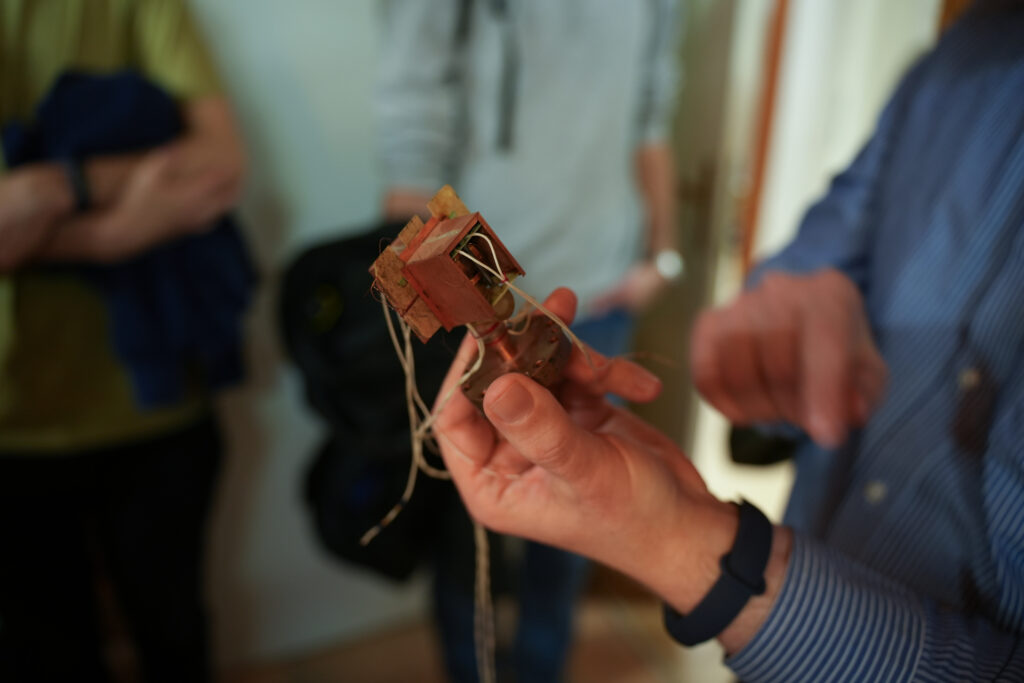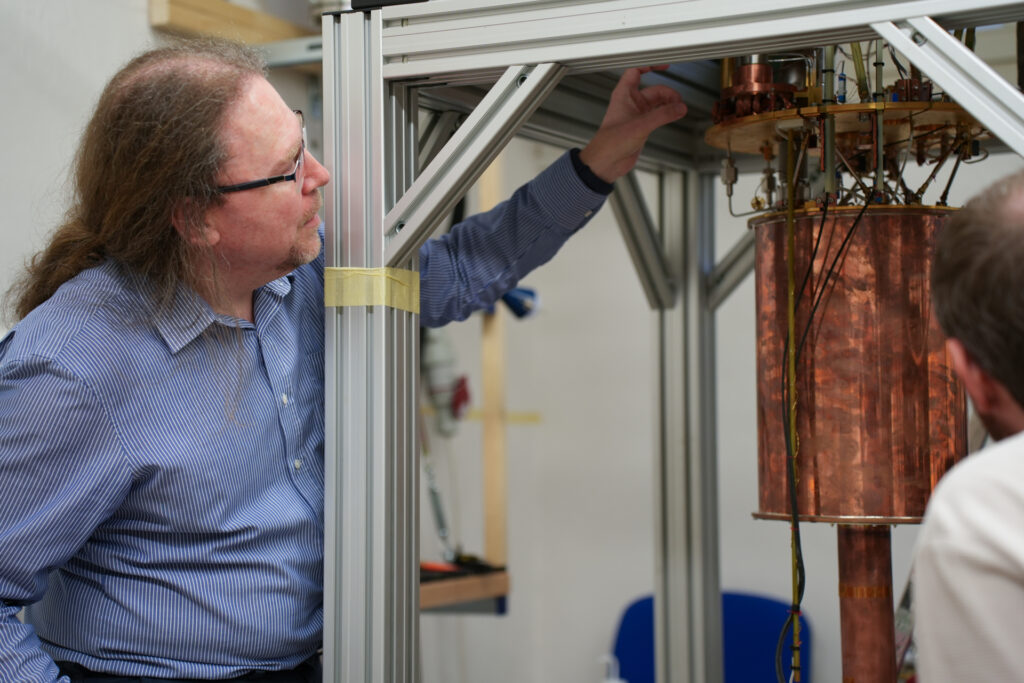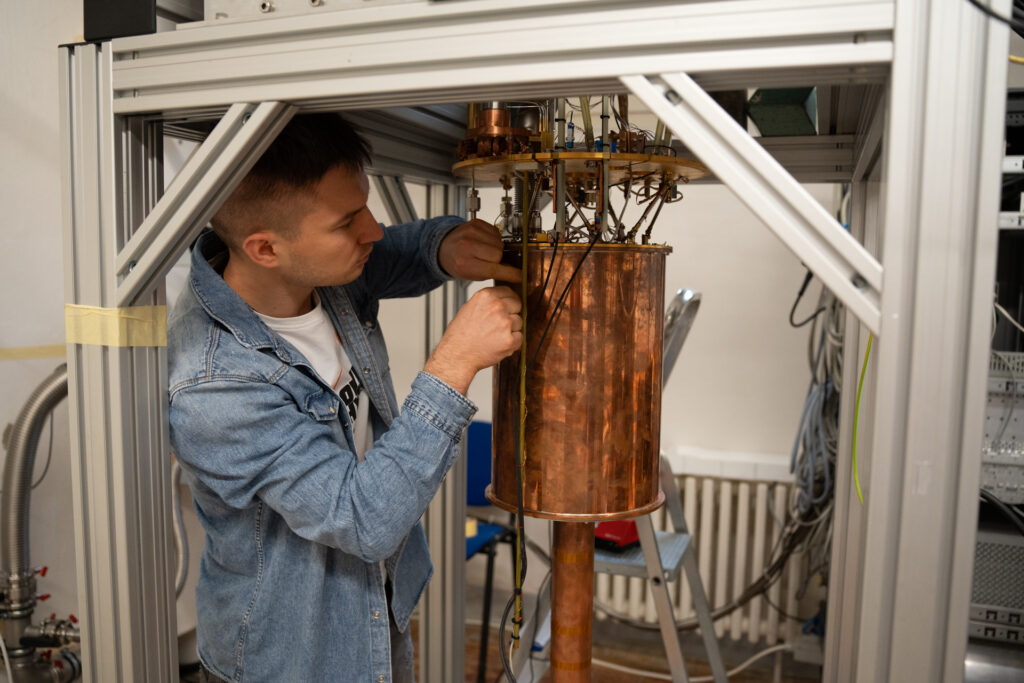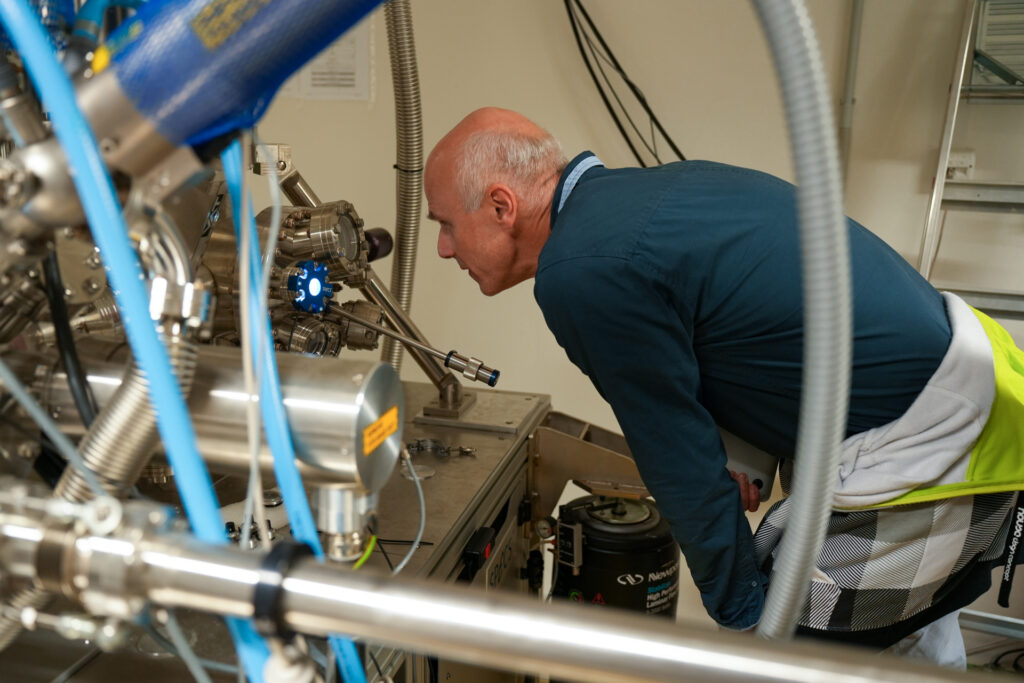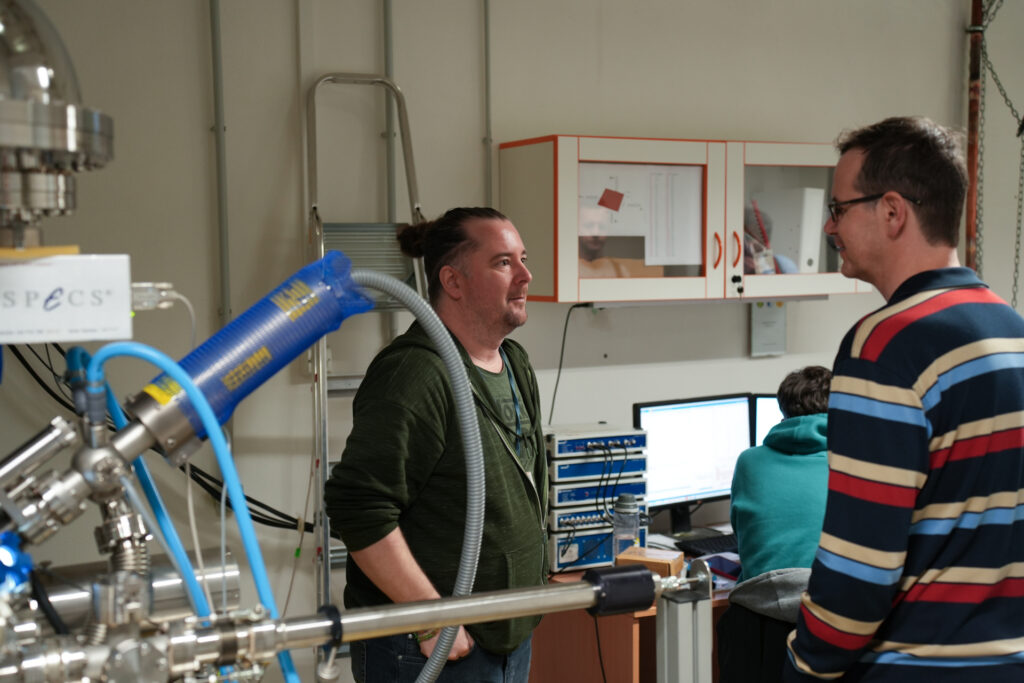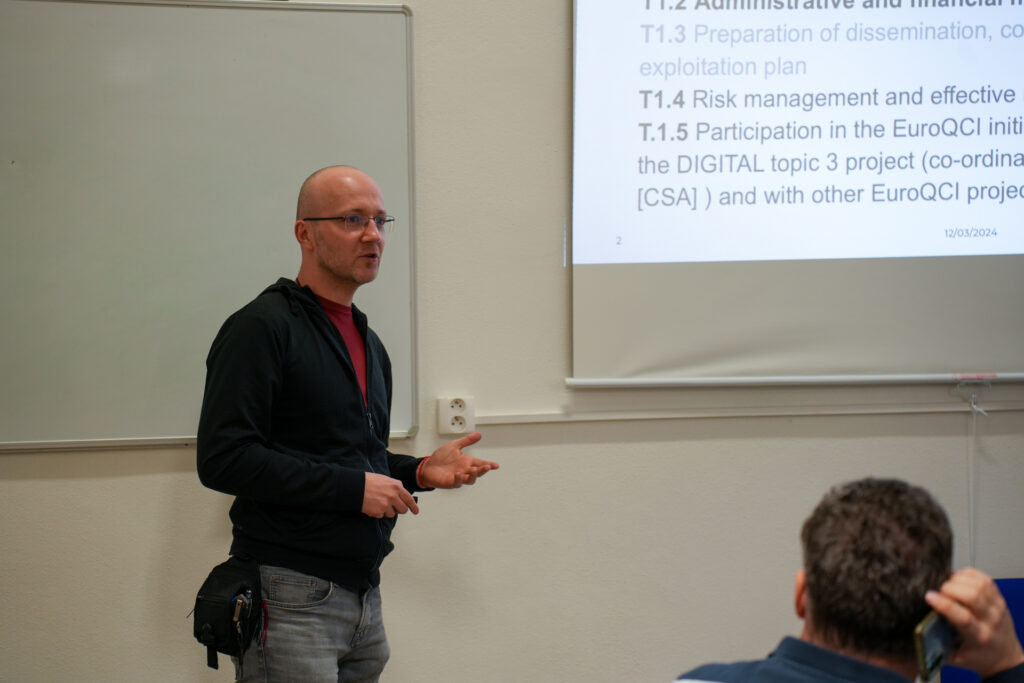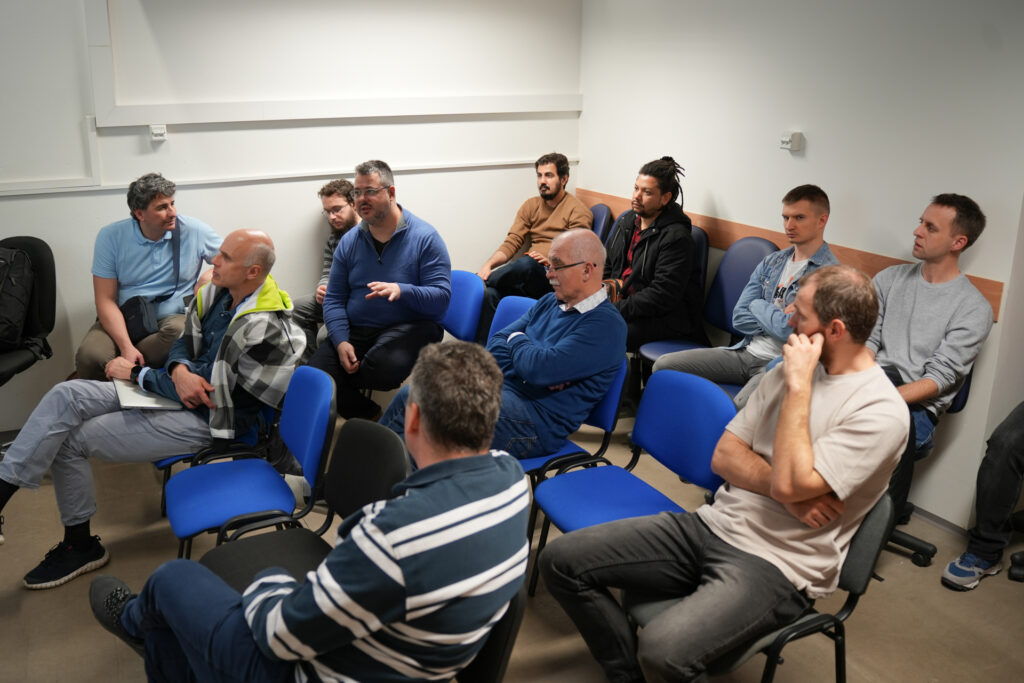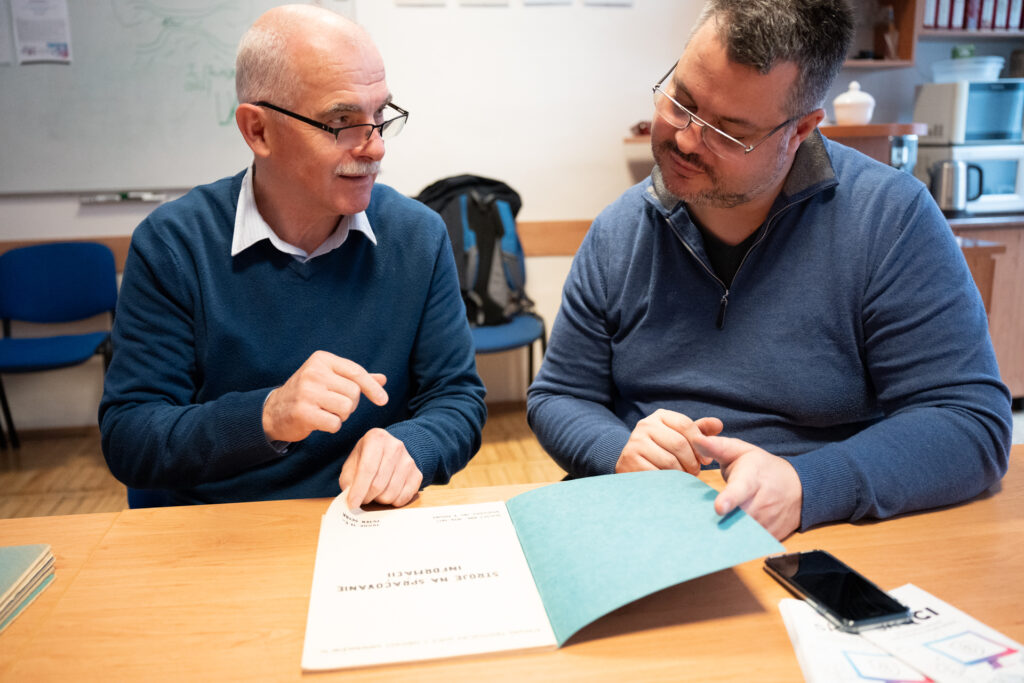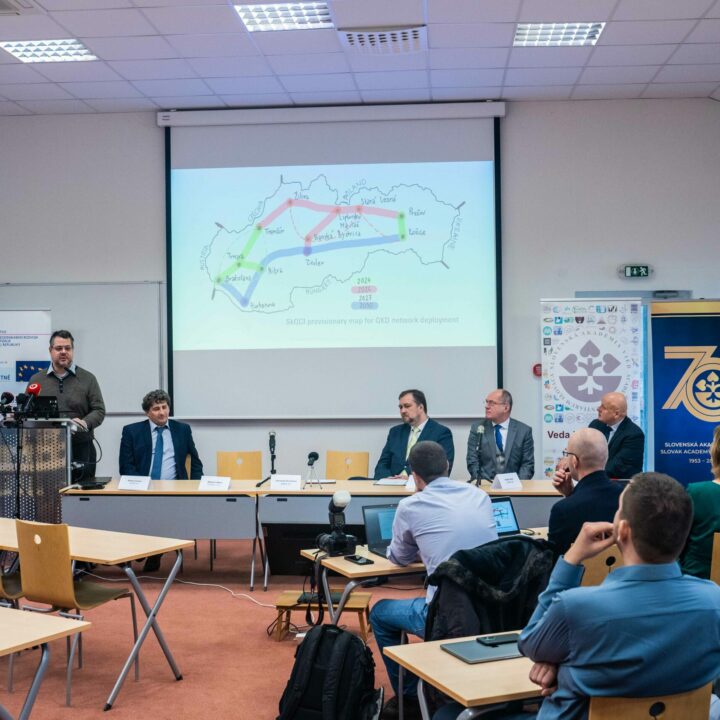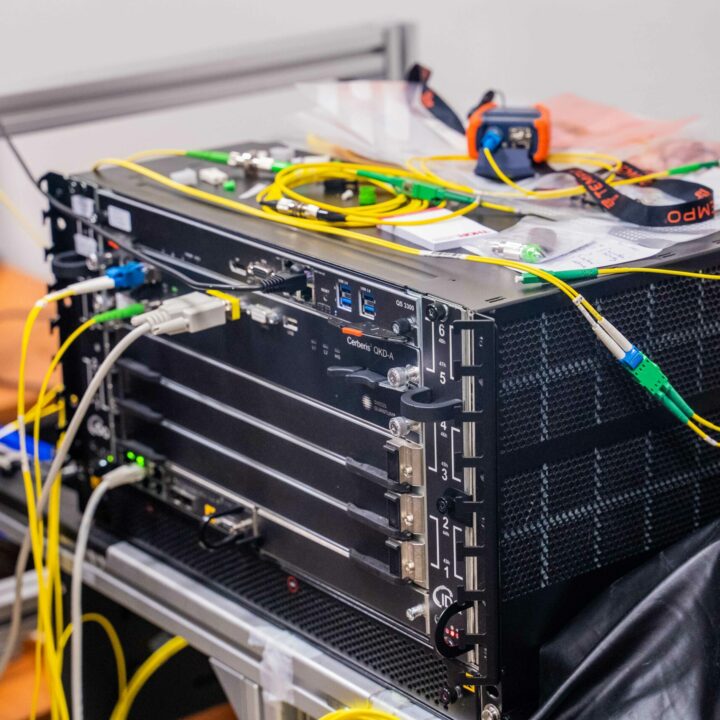skQCI project Team Meeting in Košice
Our journey led us to the heart of innovation in Košice, Slovakia, where the cool breeze of scientific discovery swept through the halls of the Institute of Experimental Physics of the Slovak Academy of Sciences (IEP SAS). From March 11th to 13th, our skQCI Project Meeting unfolded, hosted graciously by one of the consortium partners – Centre of Low Temperature Physics IEP SAS Košice. This gathering marked a historic moment as nearly our entire team convened in person for the first time, fostering invaluable face-to-face interactions and the exchange of vital information. Over three dynamic days of presentations and discussions, we delved deep into ongoing experimental research at the institute, sharing insights and forging bonds that will propel our project forward.
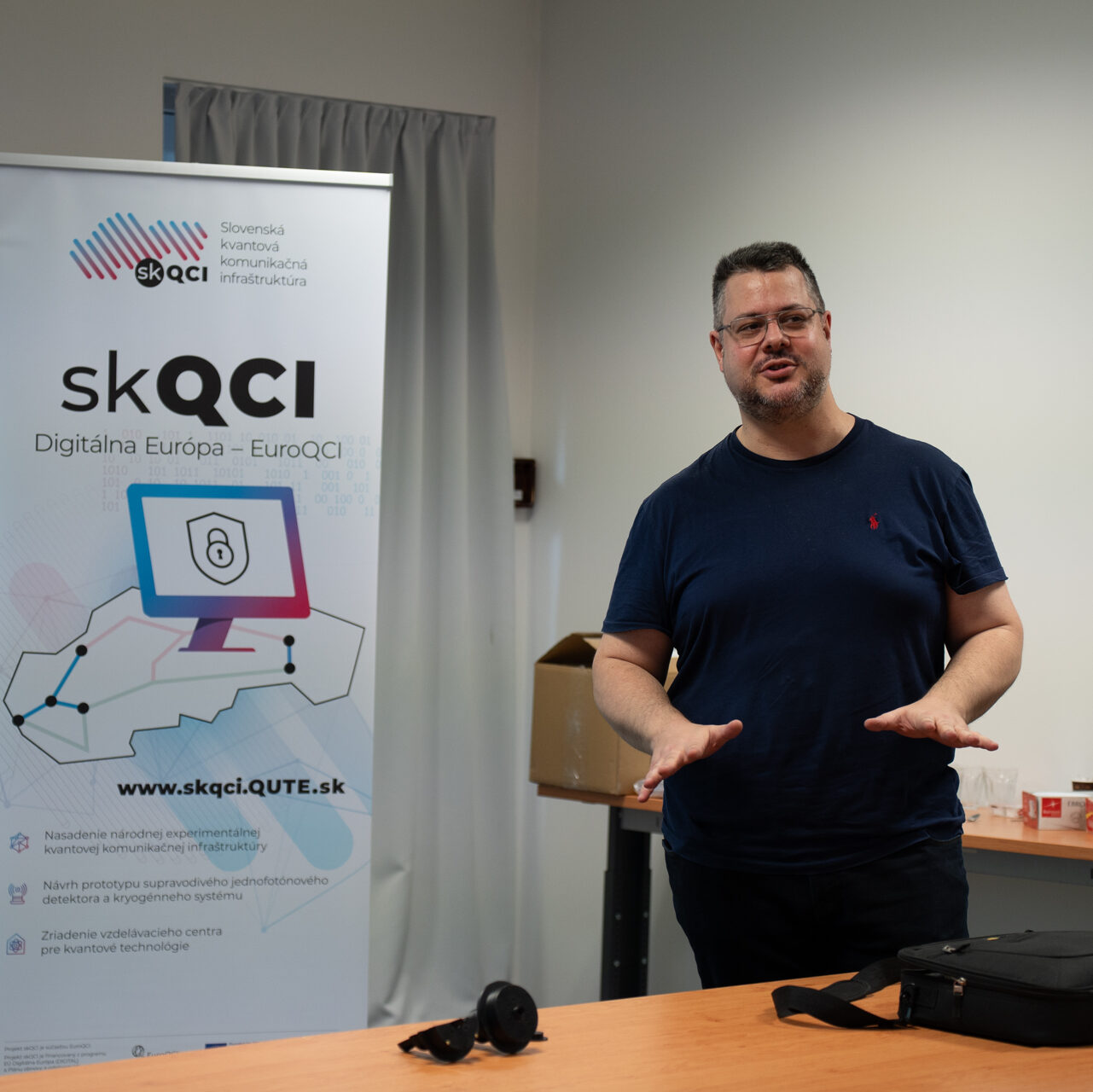
Day one commenced with presentations at the headquarters of IEP SAS on Watsonova 41, focusing on Work Package 3 (deteQUTE). P. Skyba from IEP SAS kicked off the session with an update on the development of the Cryogenic system, followed by enlightening presentations from representatives of FMFI Comenius University (M. Grajcar, M. Baránek) about the significance of order and disorder and other important aspects of SNSPD design. After a short break we continued with the next block and presentations of J. Šoltýs (IEE SAS) about the fabrication of an nanowire meander, followed by the presentation of D. Lorenc (ILC CVTI) – Optical fiber bonding to detectors.
The second day saw a continuation of presentations dedicated to various Work Packages, including WP2 (netQUTE), WP4 (eduQUTE), and WP1 (Coordination and Management). Colleagues from IP SAS (G. Borges, S. Salari) provided insights into QKD post-processing software implementation and the generation of Entanglement Photon Pairs for QKD experiment. The last block of presentations ended by the presentation about plans in educational and dissemination activities (D. Garafová, QUTE.sk).
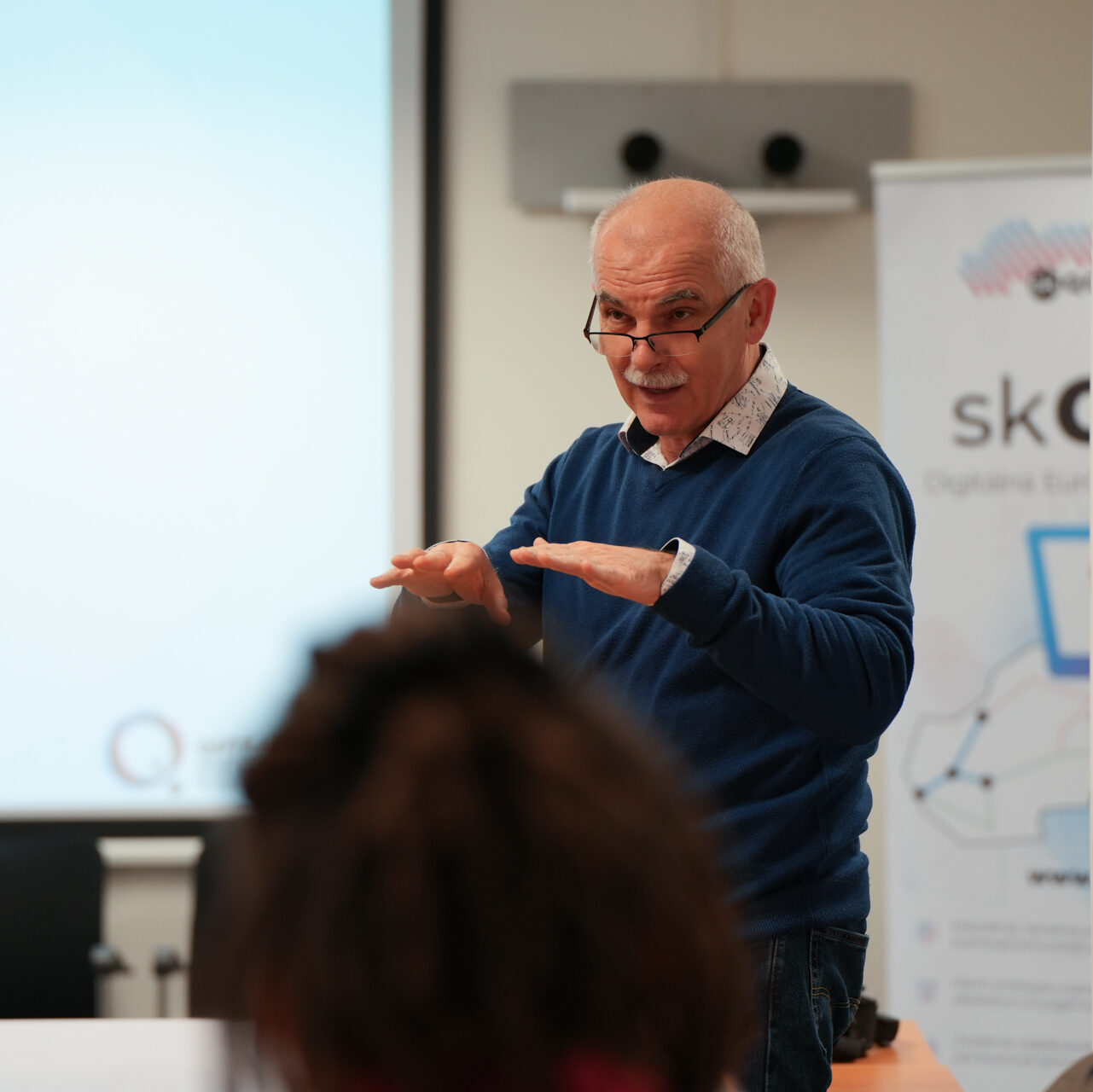
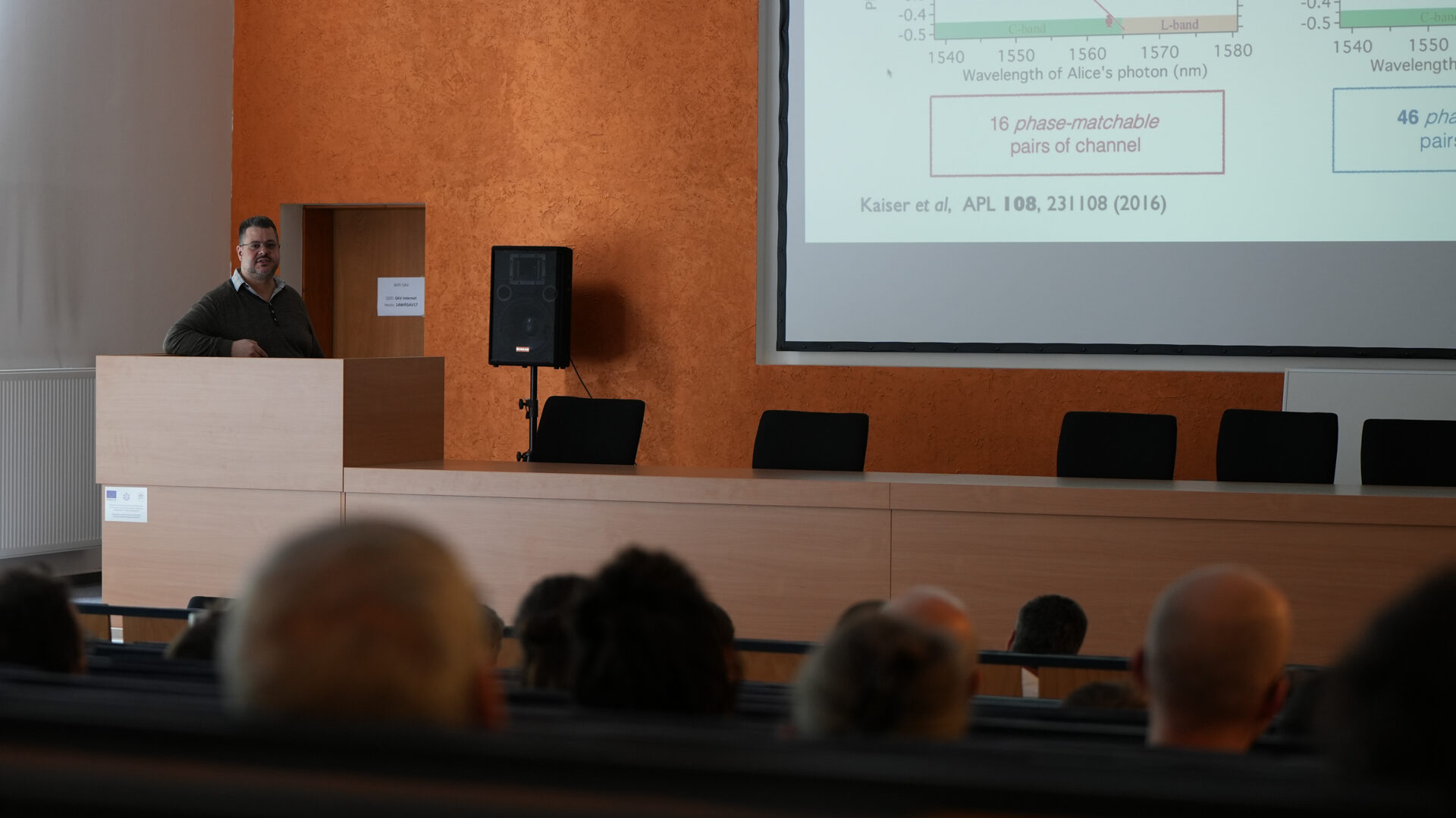
A highlight of the program was the enlightening seminar “Development of a Slovak Quantum Communication Infrastructure for the Digital European Program” by Djeylan Aktas, the visionary leader of the skQCI project. Dr. Aktas shared short and long-term visions for our national Quantum Communication Infrastructure (QCI), placing it within the broader context of the EuroQCI initiative. He of course presented the latest results obtained while building up our quantum testbed with the support of the underlying academic infrastructure (SANET).
He talked about the first implementation phase of skQCI started in January 2023 with the support of the commission’s Digital Europe Programme focused of National projects allowing Member States to design and build the national quantum communication networks that will form the basis of the terrestrial segment, testing different technologies and protocols and adapting them to the specific needs of each country.
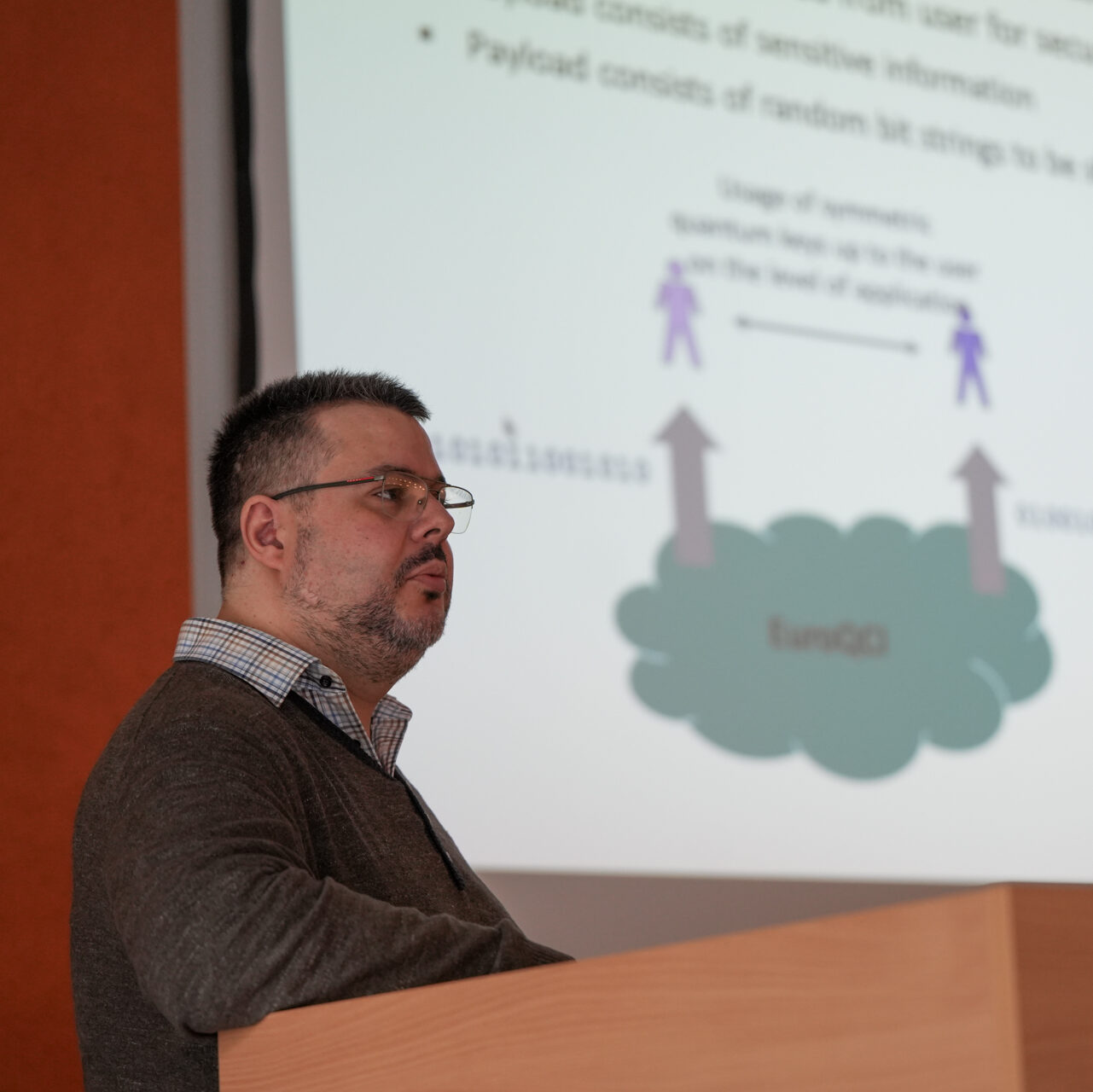
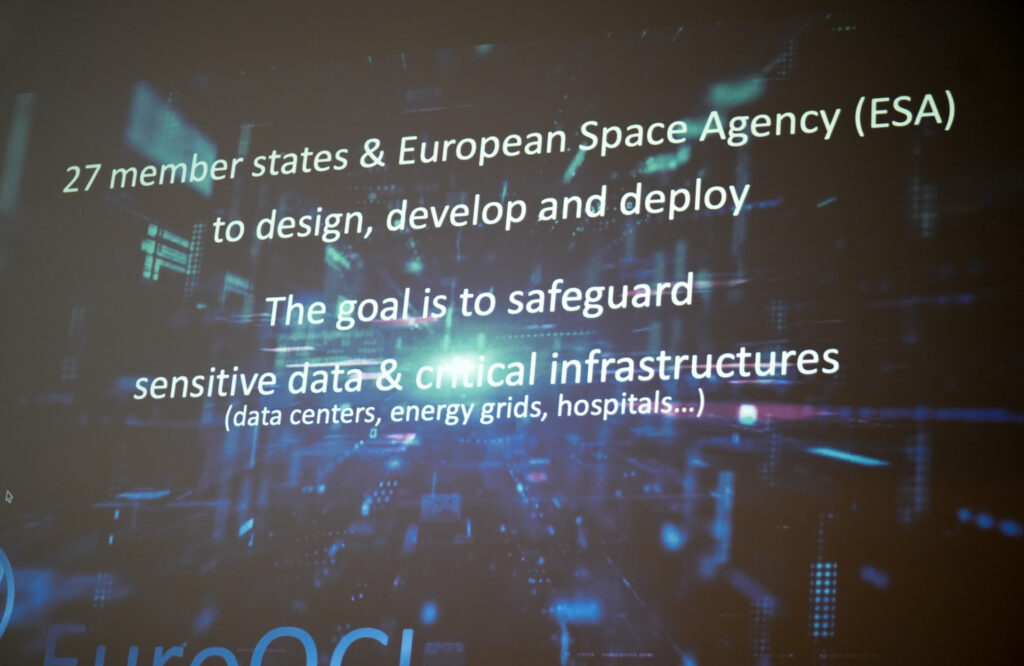
skQCI project is a part of EuroQCI, which will be composed of a terrestrial segment relying on fiber communications networks linking strategic sites at national and cross-border level, and a space segment based on satellites. It will be an integral part of IRIS² (Infrastructure for Resilience, Interconnectivity and Security by Satellite), the new EU space-based secure communication system. The EuroQCI will safeguard sensitive data and critical infrastructures by integrating quantum-based systems into existing communication infrastructures, providing an additional security layer based on quantum physics. It will reinforce the protection of Europe’s governmental institutions, their data centers, hospitals, energy grids, and more, becoming one of the main pillars of the EU’s Cybersecurity Strategy for the coming decades.
The program concluded with an enriching excursion to the shared laboratories of the Centre of Low Temperature Physics at 9 Park Angelinum and the Institute of Physics, Faculty of Natural Sciences, University of P. J. Šafárik (FNS UPJS), offering a firsthand glimpse into the vital role of liquid helium, which plays a crucial role in experiments conducted at extremely low temperatures.
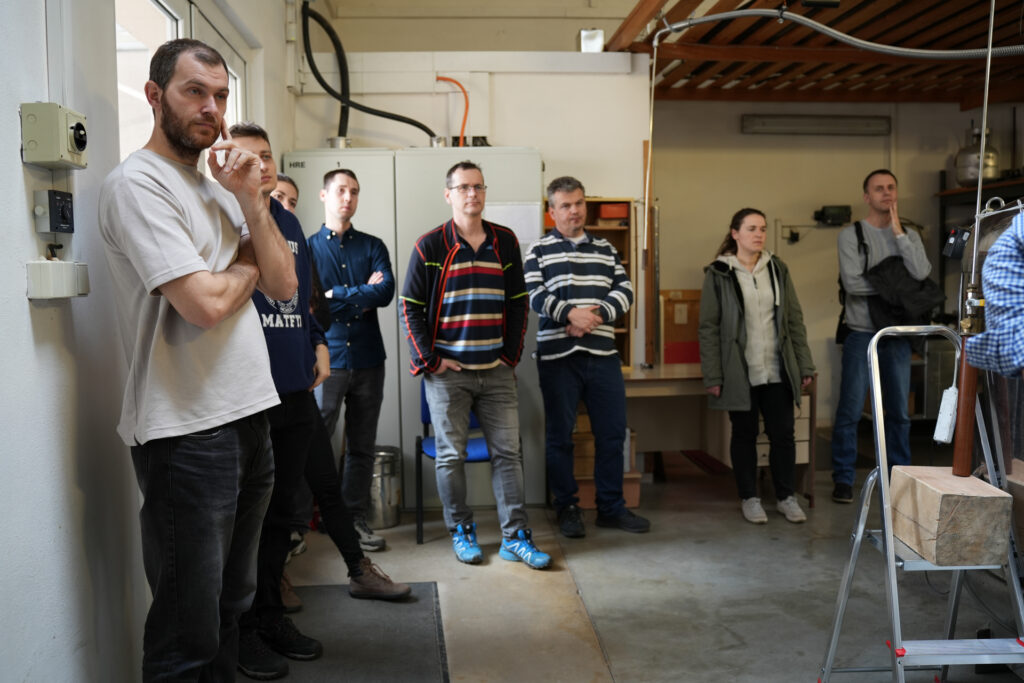
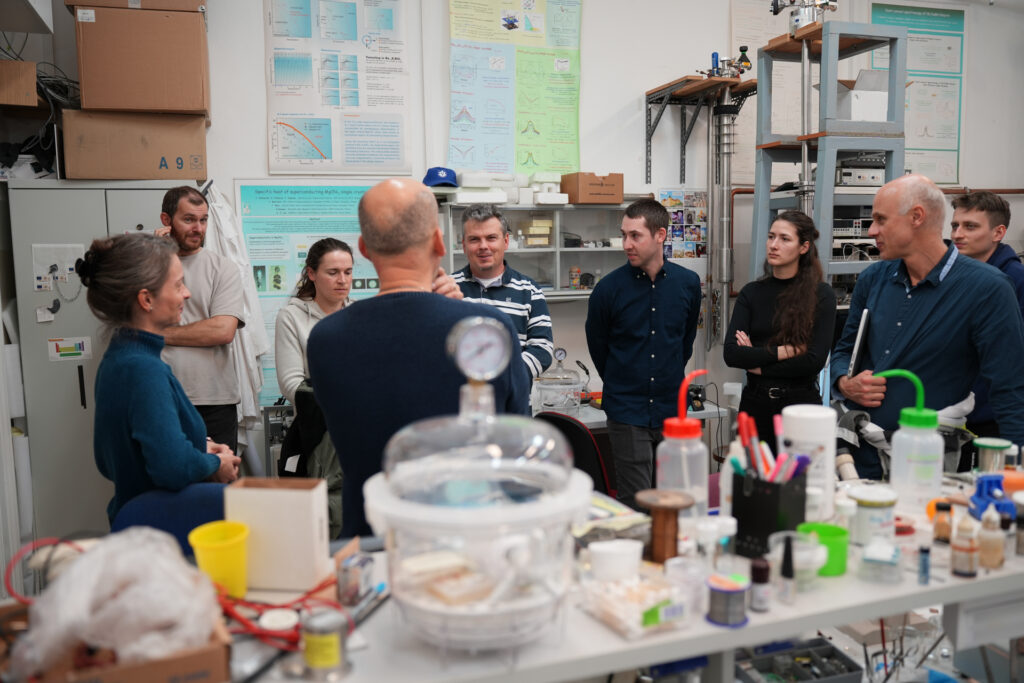
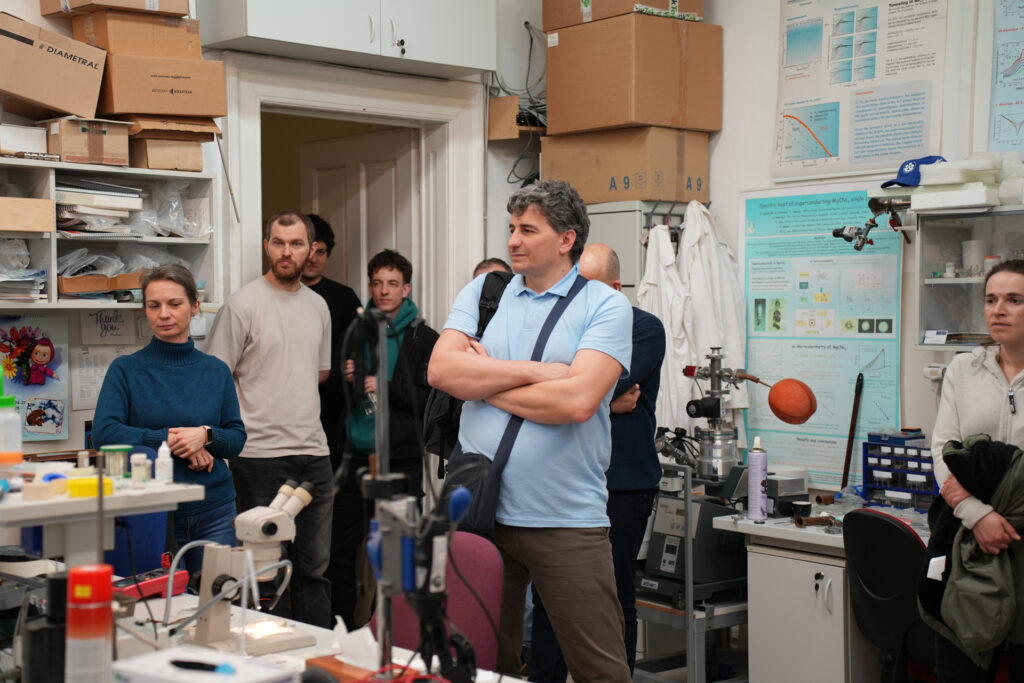
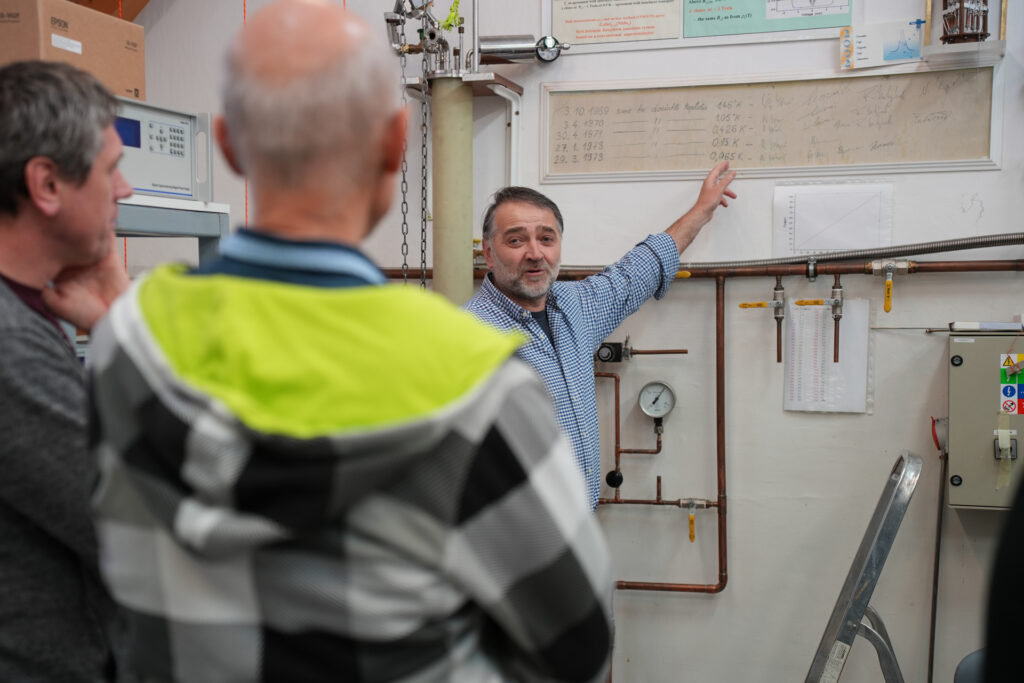
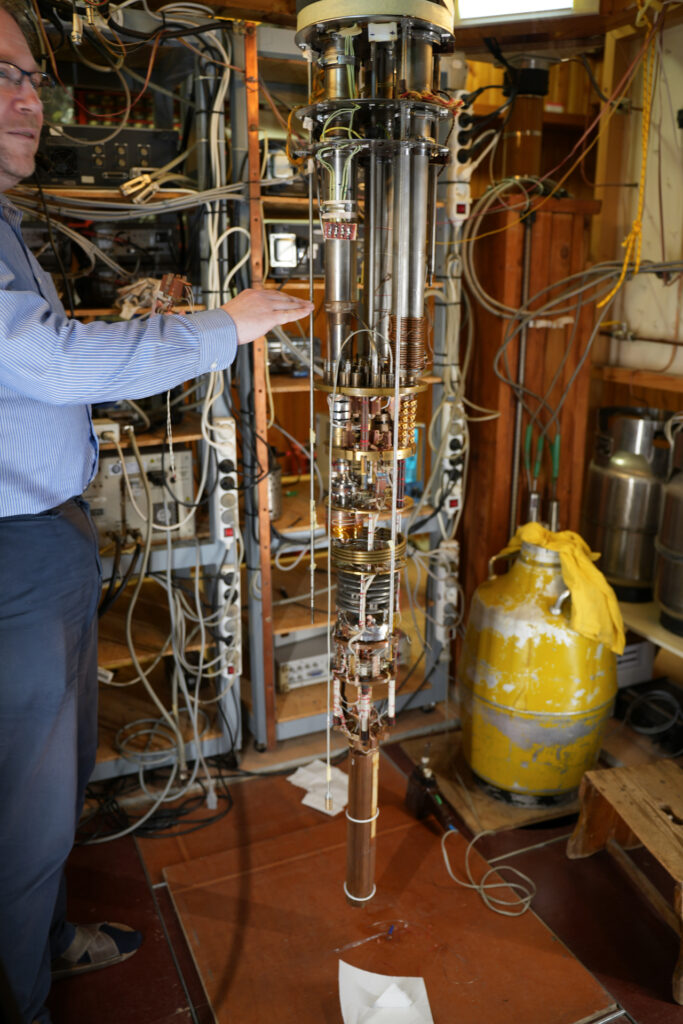
Over the past five decades, the laboratory has been at the forefront of studying materials at both low and extremely low temperatures, earning recognition as one of the premier scientific institutions in Europe and worldwide. The Centre of Low Temperature Physics stands out as a unique entity, offering scientists in this cutting-edge field access to temperatures that are among the coldest in the Universe, enabling the modeling of complex “Universe” simulations.
Within our facilities, we have the capability to conduct measurements at microkelvin temperatures, a feat that has granted us membership in the prestigious European Microkelvin Platform (EMP). This platform represents an advanced European research infrastructure specializing in the fields of physics and technology related to ultra-low temperatures and extremely sensitive measurement techniques, with a particular emphasis on quantum technologies and materials. Its overarching objective is to advance the understanding of emerging phenomena, materials, and technologies, while also pioneering new measurement methodologies and techniques. Additionally, it seeks to broaden the scope of experiments to encompass nano-kelvin temperatures, pushing the boundaries of scientific exploration even further.
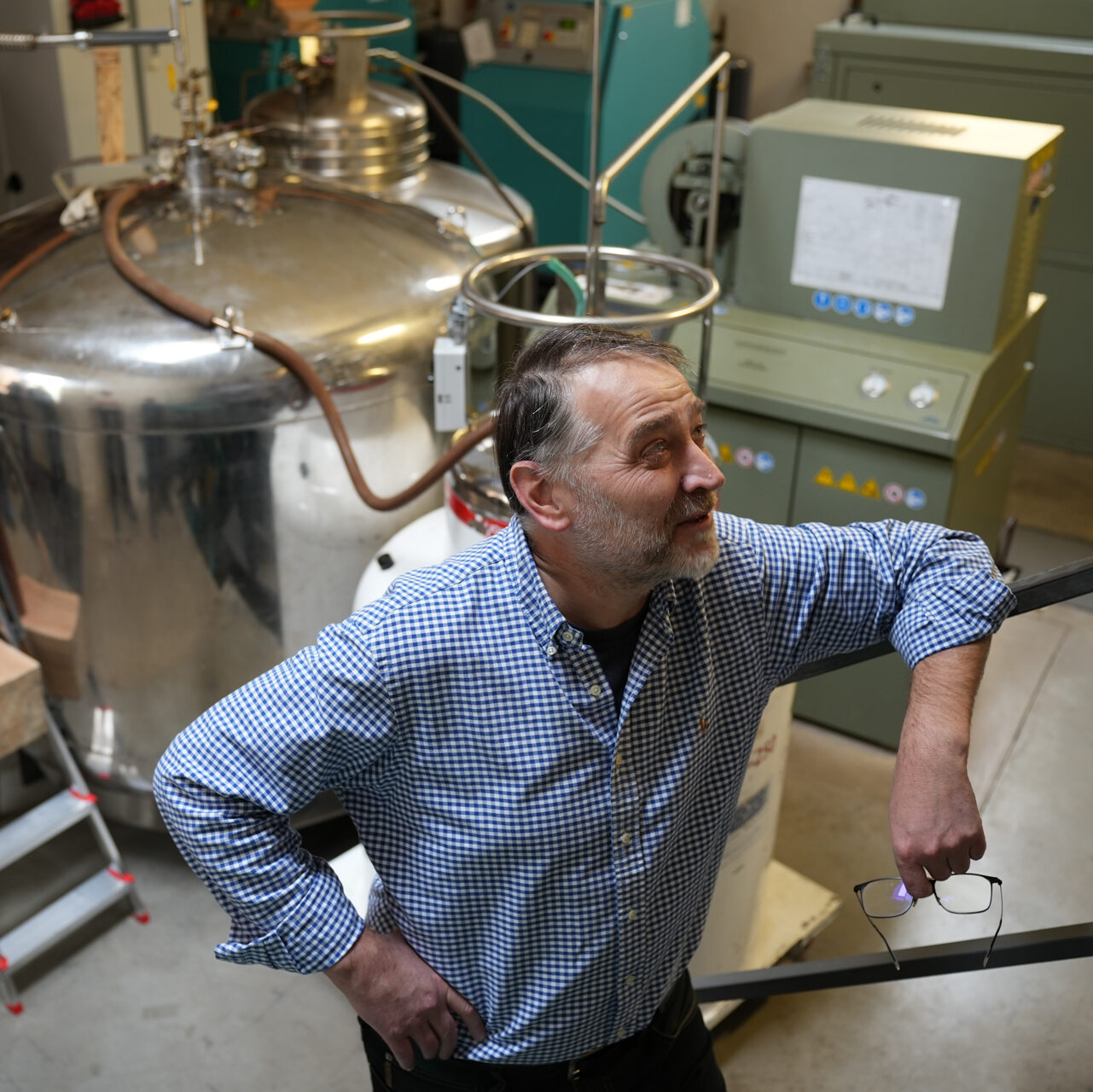
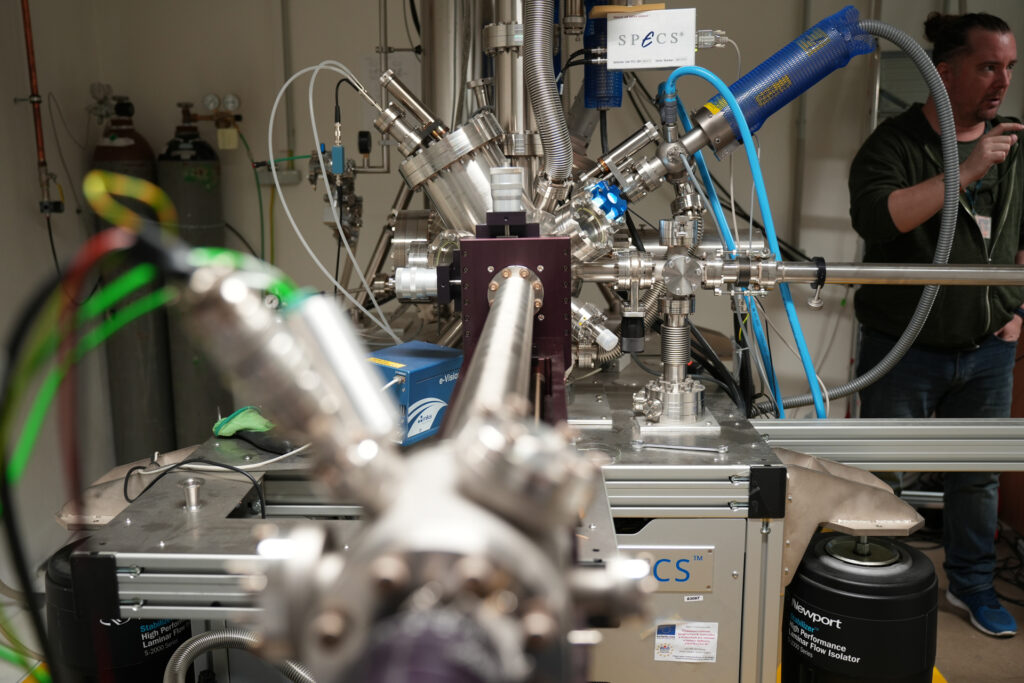
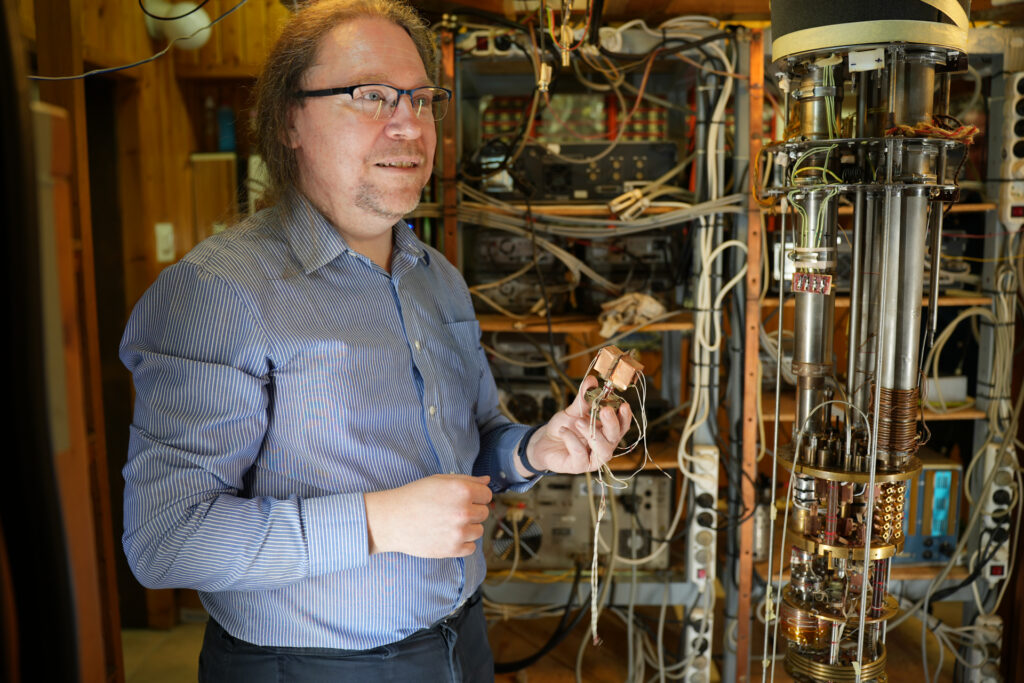
The Institute of Experimental Physics of the Slovak Academy of Sciences (IEP SAS) in Košice was established in 1969 (originally a branch office of the Institute of Physics, SAS, Bratislava) was focused on physical sciences in the fields of cosmic radiation, ferromagnetism and high energy physics. The present research activities of the Institute cover basic research in several fields of modern physics (condensed matter, subnuclear physics, space physics and biophysics), as well as in selected fields of chemical sciences, biological sciences and nanotechnology. The accreditation of the SAS Institute’s ranks the IEP among the top workplaces within SAS. The Institute enjoys a highly respectable position at both the national and international level, and has a well-established experimental infrastructure.
Several of the experimental devices constructed at the Institute are unique. The Institute is, for example, one of the few physics workplaces with a very low temperature capability (a thousandth of a degree above absolute zero, –273.15 ˚C), thus allowing the study of materials under extreme conditions. A wide range of applications of modern physics for condensed systems are under investigation including high-temperature superconductivity, magnetic fluids, amorphous metal systems, micro- and nanocrystalline materials. Scientific equipment developed at the Institute has been successfully deployed on orbital satellites and have been invaluable tools in contributing to our knowledge of the physical properties of interplanetary space.
The program of second day ended by an important presentation of P. Surovec (QUTE.sk) related to WP1 – Coordination and Management activities, followed by the long discussion. The day ended by the common dinner. The last day of our meeting was filled with informal discussions and individual talks at the Centre of Low Temperature Physics IEP SAS.
In conclusion, our recent project meeting in Košice epitomized the essence of collaborative innovation and scientific excellence. As we bid farewell to this vibrant city, we carry with us not just updates and insights, but a renewed sense of purpose and determination. Together, we’ve embarked on a journey of discovery, pushing the boundaries of what’s possible in the realm of cryogenic systems, superconductivity and quantum communication. As we look ahead, fueled by the momentum of our discussions and the bonds forged during our time together, we are poised to continue our pursuit of groundbreaking advancements that will shape the future of science. Here’s to the journey ahead and the exciting discoveries that await us!
